 Search by Keyword
|
"SOMETHING"
(George Harrison)
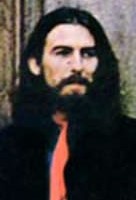 You can't rush a good thing. This phrase is especially true when describing the composition of George Harrison's highly acclaimed song "Something." George had been known to take his good old sweet time when composing a song, maybe many months, something he would admit in interviews throughout his Beatles career. George also used to be quite self-conscious about his compositions, not sure if they were good enough to be included among the Lennon/McCartney songs on a Beatles album. "I haven't got a clue what's commercial and what isn't," George stated to interviewer David Wigg in 1969. This certainly was the case with "Something." You can't rush a good thing. This phrase is especially true when describing the composition of George Harrison's highly acclaimed song "Something." George had been known to take his good old sweet time when composing a song, maybe many months, something he would admit in interviews throughout his Beatles career. George also used to be quite self-conscious about his compositions, not sure if they were good enough to be included among the Lennon/McCartney songs on a Beatles album. "I haven't got a clue what's commercial and what isn't," George stated to interviewer David Wigg in 1969. This certainly was the case with "Something."
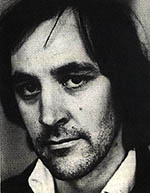 George had a sizable portion of the song written as early as September 19th, 1968, as confirmed by producer Chris Thomas who heard him play it in EMI Studios on that date. George Harrison and the producer were sitting at a harpsichord in EMI Studio One working out how Chris Thomas would play this instrument on Harrison's song “Piggies” which started to take shape on this day. “While George and I were tinkling away on this harpsichord,” Chris Thomas relates in the book “The Beatles Recording Sessions,” “he started playing another new song to me, which later turned out to be 'Something.' I said, 'That's great! Why don't we do that one instead?' and he replied, 'Do you like it, do you really think it's good?' When I said yes he said, 'Oh, maybe I'll give it to Jackie Lomax then, he can do it as a single!'” George had a sizable portion of the song written as early as September 19th, 1968, as confirmed by producer Chris Thomas who heard him play it in EMI Studios on that date. George Harrison and the producer were sitting at a harpsichord in EMI Studio One working out how Chris Thomas would play this instrument on Harrison's song “Piggies” which started to take shape on this day. “While George and I were tinkling away on this harpsichord,” Chris Thomas relates in the book “The Beatles Recording Sessions,” “he started playing another new song to me, which later turned out to be 'Something.' I said, 'That's great! Why don't we do that one instead?' and he replied, 'Do you like it, do you really think it's good?' When I said yes he said, 'Oh, maybe I'll give it to Jackie Lomax then, he can do it as a single!'”
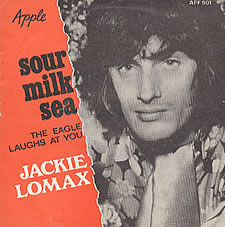 At that time, The Beatles were recruiting artists for their newly formed Apple Records and Harrison had secured a recording contract with an acquaintance Jackie Lomax, formerly from the Liverpool group The Undertakers. He was hoping to supply Jackie Lomax with a composition that would be suitable for a hit single, thus giving him a good head start on a successful recording career. It ended up that George gave him another song he had composed that year, “Sour Milk Sea,” which was indeed released by Jackie Lomax as his first single. At that time, The Beatles were recruiting artists for their newly formed Apple Records and Harrison had secured a recording contract with an acquaintance Jackie Lomax, formerly from the Liverpool group The Undertakers. He was hoping to supply Jackie Lomax with a composition that would be suitable for a hit single, thus giving him a good head start on a successful recording career. It ended up that George gave him another song he had composed that year, “Sour Milk Sea,” which was indeed released by Jackie Lomax as his first single.
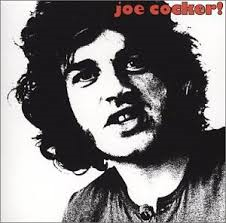 By February 25th, 1969, George's 26th Birthday, George had completed writing his song “Something,” the evidence being a simple but breathtaking demo he recorded at EMI Studios on this day. Still not sure what to do with the song, Harrison sent a copy of a demo version to Joe Cocker for consideration to be included on his second album, George being impressed by his soulful version of “With A Little Help From My Friends” which had become a British #1 hit in late 1968. Cocker agreed to record it, George even playing guitar on his version of "Something," which was eventually released on his album “Joe Cocker!” in November of 1969. By February 25th, 1969, George's 26th Birthday, George had completed writing his song “Something,” the evidence being a simple but breathtaking demo he recorded at EMI Studios on this day. Still not sure what to do with the song, Harrison sent a copy of a demo version to Joe Cocker for consideration to be included on his second album, George being impressed by his soulful version of “With A Little Help From My Friends” which had become a British #1 hit in late 1968. Cocker agreed to record it, George even playing guitar on his version of "Something," which was eventually released on his album “Joe Cocker!” in November of 1969.
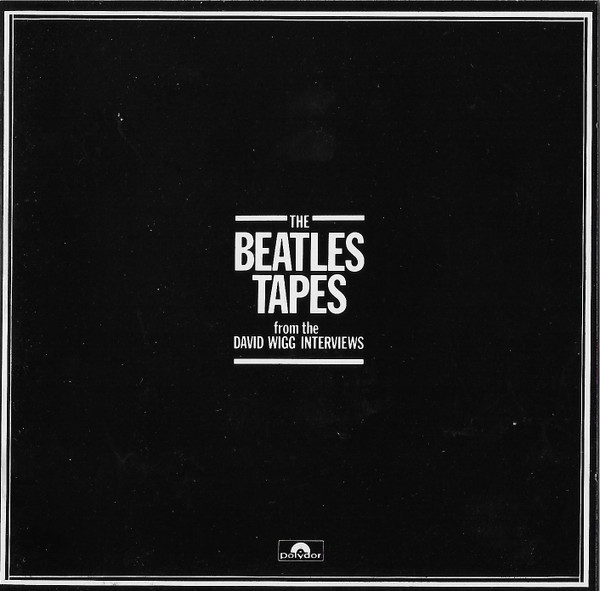 Meanwhile, George did gain enough confidence in this song to put in an attempt with The Beatles also, which turned out to be the best decision yet. The other band members recognized "Something" as the best track on their “Abbey Road” album, this song being chosen to become the single from the album. John Lennon stated in interview just after the LP was released that George's song was "about the best track on the album. We'll probably put 'Something' out as a single in America. They're red hot for it over there." Paul concurred at the time, saying "this, to my mind, is the best song George has ever written." As it turned out, "Something" was the first and only time that a George Harrison composition graced the a-side of a Beatles single. “They blessed me with a couple of b-sides in the past,” George stated to David Wigg in October of 1969 on BBC Radio 1's "Scene and Heard" program and heard on the 1976 interview LP "The Beatles Tapes." “This is the first time I've had an a-side. A big deal, eh? Ha-ha.” Meanwhile, George did gain enough confidence in this song to put in an attempt with The Beatles also, which turned out to be the best decision yet. The other band members recognized "Something" as the best track on their “Abbey Road” album, this song being chosen to become the single from the album. John Lennon stated in interview just after the LP was released that George's song was "about the best track on the album. We'll probably put 'Something' out as a single in America. They're red hot for it over there." Paul concurred at the time, saying "this, to my mind, is the best song George has ever written." As it turned out, "Something" was the first and only time that a George Harrison composition graced the a-side of a Beatles single. “They blessed me with a couple of b-sides in the past,” George stated to David Wigg in October of 1969 on BBC Radio 1's "Scene and Heard" program and heard on the 1976 interview LP "The Beatles Tapes." “This is the first time I've had an a-side. A big deal, eh? Ha-ha.”
Songwriting History
"'Something' was written on the piano while we were making the 'White Album,'" George explained in 1980. "I had a break while Paul was doing some overdubbing so I went into an empty studio and began to write. That's really all there is to it, except the middle took some time to sort out. It didn't go on the 'White Album' because we'd already finished all the tracks."
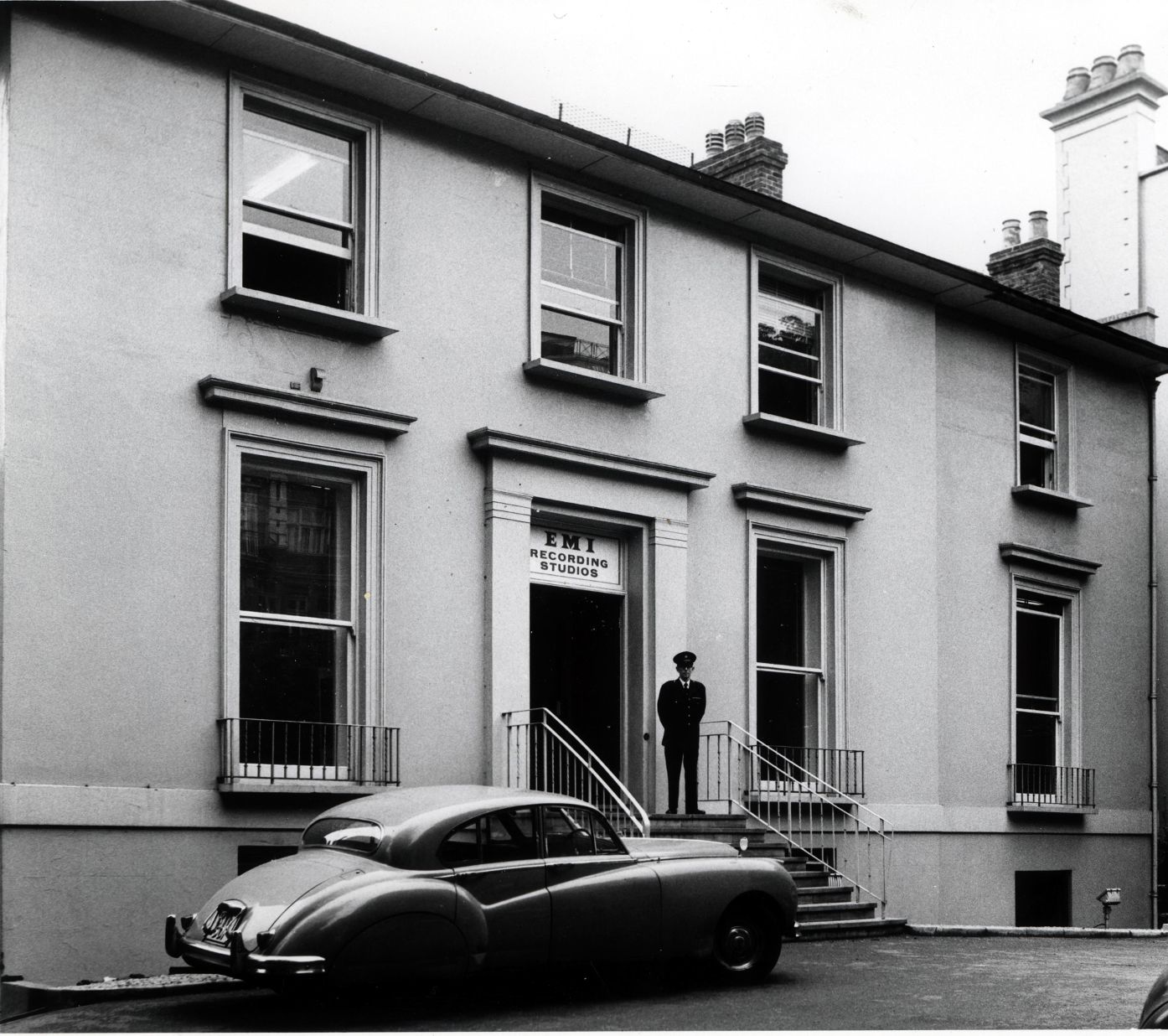 It can easily be presumed that George wandered into one of the open EMI studios sometime in the first two-and-a-half weeks of September, 1968, to start work writing what became “Something.” Producer Chris Thomas's recollection of hearing George play the song on harpsichord on September 19th, as mentioned above, appears to indicate that a good portion of the verse melody was written with some lyrics being in place, although the climactic bridge didn't exist yet. It can easily be presumed that George wandered into one of the open EMI studios sometime in the first two-and-a-half weeks of September, 1968, to start work writing what became “Something.” Producer Chris Thomas's recollection of hearing George play the song on harpsichord on September 19th, as mentioned above, appears to indicate that a good portion of the verse melody was written with some lyrics being in place, although the climactic bridge didn't exist yet.
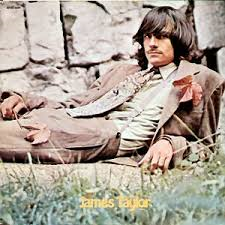 Another element of the song that appears to have been in place by this time was explained by George in interviews back in 1969. “I wrote it at the time when we were making the last double album,” he told David Wigg. “And it's just the first line 'something in the was she moves' which has been in millions of songs. It's not a special thing but it just seemed quite apt.” He admits a little more about where he got this first line from in another 1969 interview: “I could never think of words for it...There was a James Taylor song called 'Something In The Way She Moves' which is the first line of that. And so then I thought of trying to change the words, but they were the words that came when I first wrote it. So in the end I just left it as that and just called it 'Something.'” Another element of the song that appears to have been in place by this time was explained by George in interviews back in 1969. “I wrote it at the time when we were making the last double album,” he told David Wigg. “And it's just the first line 'something in the was she moves' which has been in millions of songs. It's not a special thing but it just seemed quite apt.” He admits a little more about where he got this first line from in another 1969 interview: “I could never think of words for it...There was a James Taylor song called 'Something In The Way She Moves' which is the first line of that. And so then I thought of trying to change the words, but they were the words that came when I first wrote it. So in the end I just left it as that and just called it 'Something.'”
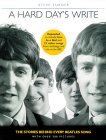 James Taylor was one of the first artists to be signed to The Beatles' Apple Records label. "I'd written 'Something In The Way She Moves' about two years before I recorded it," James Taylor explained in Steve Turner's book "A Hard Day's Write." "I'd made a tape of (the song) and about seven other songs about a couple of months before I met (Apple producer) Peter Asher. I know Paul listened to it at Apple but I'm not sure who else listened to it...I've always assumed George must have heard it but I never actually spoke to him about it." James Taylor was one of the first artists to be signed to The Beatles' Apple Records label. "I'd written 'Something In The Way She Moves' about two years before I recorded it," James Taylor explained in Steve Turner's book "A Hard Day's Write." "I'd made a tape of (the song) and about seven other songs about a couple of months before I met (Apple producer) Peter Asher. I know Paul listened to it at Apple but I'm not sure who else listened to it...I've always assumed George must have heard it but I never actually spoke to him about it."
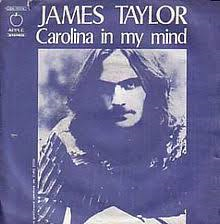 Whether or not George heard his demo of "Something In The Way She Moves" has not been established. However, Taylor was recording his debut album for Apple at Trident Studios from July to October of 1968, and George could easily have heard it there since The Beatles were periodically using Trident Studios as well during this period for recording the "White Album," George's song "Savoy Truffle" being recorded there, for example, on October 3rd. George even contributed backing vocals to Taylor's song "Carolina In My Mind" during this time period. In any event, the opening lyric to his song “Something In The Way She Moves” was fresh in George's mind when he was writing “Something” and he just decided to keep it. “I never thought for a second that George intended to do that,” James Taylor has since remarked. “I don't think he intentionally ripped anything off, and all music is borrowed from other music. So, completely, I let it pass...If George either consciously or unconsciously took a line from one of my songs then I find it very flattering.” Whether or not George heard his demo of "Something In The Way She Moves" has not been established. However, Taylor was recording his debut album for Apple at Trident Studios from July to October of 1968, and George could easily have heard it there since The Beatles were periodically using Trident Studios as well during this period for recording the "White Album," George's song "Savoy Truffle" being recorded there, for example, on October 3rd. George even contributed backing vocals to Taylor's song "Carolina In My Mind" during this time period. In any event, the opening lyric to his song “Something In The Way She Moves” was fresh in George's mind when he was writing “Something” and he just decided to keep it. “I never thought for a second that George intended to do that,” James Taylor has since remarked. “I don't think he intentionally ripped anything off, and all music is borrowed from other music. So, completely, I let it pass...If George either consciously or unconsciously took a line from one of my songs then I find it very flattering.”
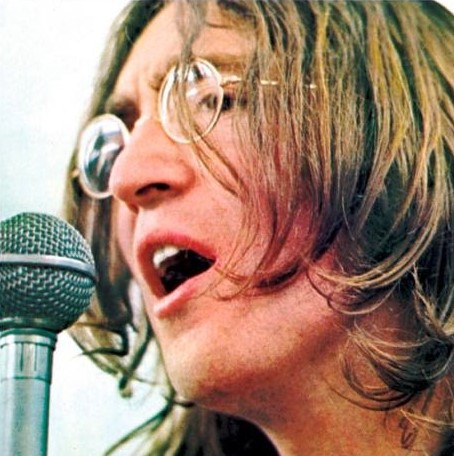 George appeared to be stuck lyrically for a while after that. “I usually get the first few lines of lyrics and melody both at once, and then I finish the melody usually first and then have to write the words...I wrote the whole first verse and just said everything I wanted to say, and so now I need to write a couple more verses. I find that much more difficult. But John gave me a handy tip once, which is once you start to write a song, try and finish it straight away while you're in the mood, and I've learned from experience, because you go back to it and then you're in a whole different state of mind and it's more difficult. Sometimes it's easier, but on the whole it's more difficult to come back to something so I do now try to finish some straight away.” George appeared to be stuck lyrically for a while after that. “I usually get the first few lines of lyrics and melody both at once, and then I finish the melody usually first and then have to write the words...I wrote the whole first verse and just said everything I wanted to say, and so now I need to write a couple more verses. I find that much more difficult. But John gave me a handy tip once, which is once you start to write a song, try and finish it straight away while you're in the mood, and I've learned from experience, because you go back to it and then you're in a whole different state of mind and it's more difficult. Sometimes it's easier, but on the whole it's more difficult to come back to something so I do now try to finish some straight away.”
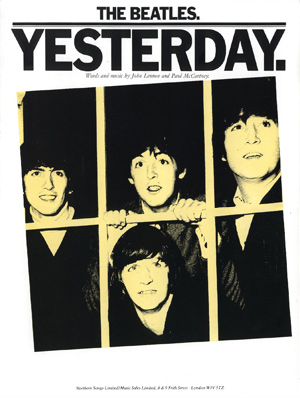 Similar to Paul when writing “Yesterday,” George was blown away by how easily such a catchy song came to him, thinking he must have heard the melody somewhere before. “I wrote the main part of that and then I, sort of, just put it on ice for six months because I could never think of the words for it and thought, 'That is too easy. It sounds so simple. It must be something,' because, once I got into writing it, the first change, 'Du, du, du, du, du, du, dah.' Once I made that change, everything just followed, you know. ''Dah, duh,' all those chord changes, and then, the chord progression seemed to follow naturally. So I thought it must be something else, but it wasn't." Similar to Paul when writing “Yesterday,” George was blown away by how easily such a catchy song came to him, thinking he must have heard the melody somewhere before. “I wrote the main part of that and then I, sort of, just put it on ice for six months because I could never think of the words for it and thought, 'That is too easy. It sounds so simple. It must be something,' because, once I got into writing it, the first change, 'Du, du, du, du, du, du, dah.' Once I made that change, everything just followed, you know. ''Dah, duh,' all those chord changes, and then, the chord progression seemed to follow naturally. So I thought it must be something else, but it wasn't."
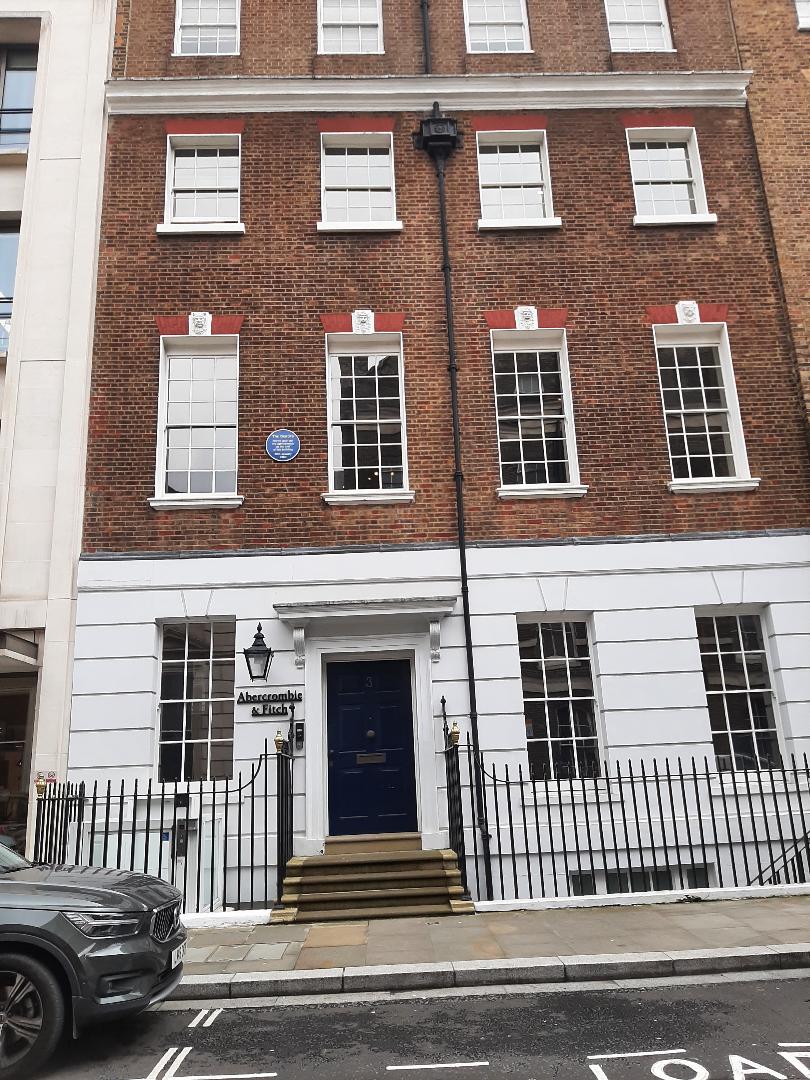 George took it off ice on January 28th and 29th, 1969, during the final days of the sessions for what became the “Let It Be” album and film. Early on January 28th at Apple Studio, John tried to get the ball rolling for the day by saying, "Let's pick up on the ones that are all in pieces. I'm trying to get us to do one of George's for the first batch, y'know." Acknowledging George's previous feelings of discouragement which led him to temporarily quit the group recently, John thought to include him in the current project as much as possible. This led to some serious work on "Something" with the intention of whipping it together before the end of January when the project needed to be complete. George ran them through the song multiple times, asking for lyrical suggestions. “What could it be, Paul, 'something in the way she moves,' something like that, 'attracts me like...' I couldn't think of what attracted me at all!” George exclaims exasperatingly to his bandmates. John suggests, “Just say whatever comes into your head each time, 'attracts me like a cauliflower,' until you get the word.” George replied, "But I've been through this one for about six months - I mean just that line. 'Attracts me like a pomegranate' - we could have that!" George took it off ice on January 28th and 29th, 1969, during the final days of the sessions for what became the “Let It Be” album and film. Early on January 28th at Apple Studio, John tried to get the ball rolling for the day by saying, "Let's pick up on the ones that are all in pieces. I'm trying to get us to do one of George's for the first batch, y'know." Acknowledging George's previous feelings of discouragement which led him to temporarily quit the group recently, John thought to include him in the current project as much as possible. This led to some serious work on "Something" with the intention of whipping it together before the end of January when the project needed to be complete. George ran them through the song multiple times, asking for lyrical suggestions. “What could it be, Paul, 'something in the way she moves,' something like that, 'attracts me like...' I couldn't think of what attracted me at all!” George exclaims exasperatingly to his bandmates. John suggests, “Just say whatever comes into your head each time, 'attracts me like a cauliflower,' until you get the word.” George replied, "But I've been through this one for about six months - I mean just that line. 'Attracts me like a pomegranate' - we could have that!"
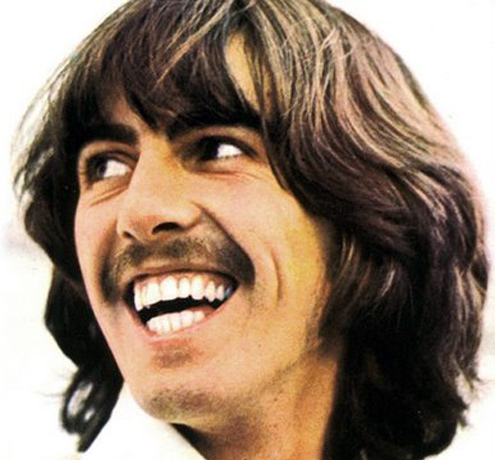 This rehearsal, which was taped and is available to hear in part on the "Super Deluxe" editions of the "Let It Be" album, in Peter Jackson's "Get Back" series and in greater length on bootlegs, is an interesting listen, giving a 'fly on the wall' demonstration of how a great song is written. After they go through one makeshift verse of the song, John suggests, "Have you tried to make sense of it every time, every line? Then you've got to stop every time. You can just go on and on and on and then go back over it. Or don't, depending on what happens." The Beatles then batted around ideas, John seemingly coming up with what became the lyric “Don't want to leave her now, you know I believe and how,” and George playing around with what he called a “counter melody” that he would sing in a higher register during the verses. George did have the melody of the bridge written at this point, as well as the lyrics for the third verse. They goofed around with lyrical ideas for the bridge, coming up with things like “Well, did you know who missed the show?,” “Fancy Joe missed the show,” “Where did you go, Mr. Show? I don't know” and so on. Fortunately, this Tomfoolery was used only as a template for George to formulate proper lyrics later. This rehearsal, which was taped and is available to hear in part on the "Super Deluxe" editions of the "Let It Be" album, in Peter Jackson's "Get Back" series and in greater length on bootlegs, is an interesting listen, giving a 'fly on the wall' demonstration of how a great song is written. After they go through one makeshift verse of the song, John suggests, "Have you tried to make sense of it every time, every line? Then you've got to stop every time. You can just go on and on and on and then go back over it. Or don't, depending on what happens." The Beatles then batted around ideas, John seemingly coming up with what became the lyric “Don't want to leave her now, you know I believe and how,” and George playing around with what he called a “counter melody” that he would sing in a higher register during the verses. George did have the melody of the bridge written at this point, as well as the lyrics for the third verse. They goofed around with lyrical ideas for the bridge, coming up with things like “Well, did you know who missed the show?,” “Fancy Joe missed the show,” “Where did you go, Mr. Show? I don't know” and so on. Fortunately, this Tomfoolery was used only as a template for George to formulate proper lyrics later.
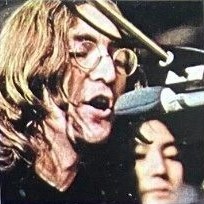 The next day, January 29th, 1969, George ran through the song instrumentally which prompted John to exclaim "Just going through the requests," which prompted the rest of the band to join in. John began to sing whatever he could remember of the lyrics from the previous day and then, after the song dissolves after the third verse, he states, "OK, should we get on with the rock 'n' roll show?" Therefore, no additional writing of "Something" occurred on this day and it was dropped for consideration for the "Get Back / Let It Be" project. The next day, January 29th, 1969, George ran through the song instrumentally which prompted John to exclaim "Just going through the requests," which prompted the rest of the band to join in. John began to sing whatever he could remember of the lyrics from the previous day and then, after the song dissolves after the third verse, he states, "OK, should we get on with the rock 'n' roll show?" Therefore, no additional writing of "Something" occurred on this day and it was dropped for consideration for the "Get Back / Let It Be" project.
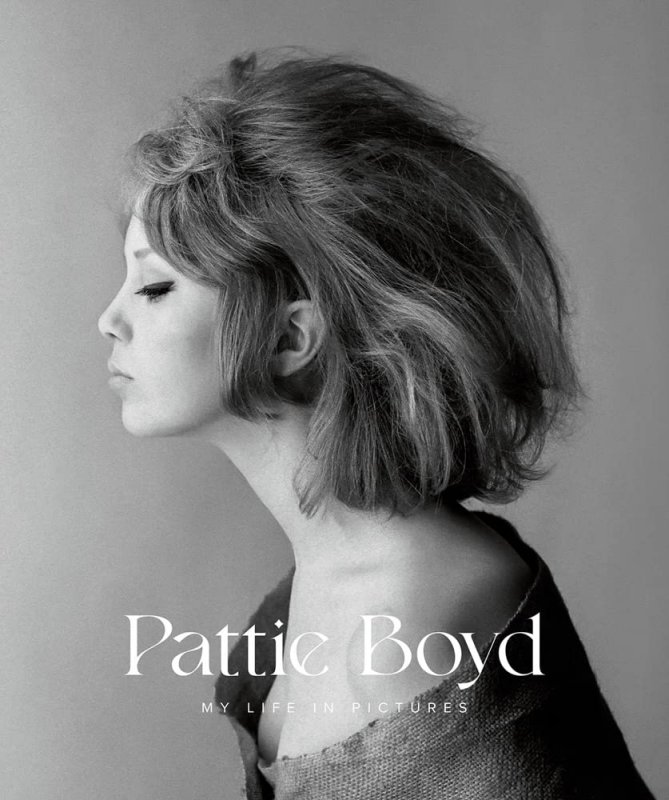 By February 25th, 1969, when George recorded his demo in EMI Studios as mentioned above, all the proper lyrics were in place. Handwritten lyrics from this period include the following verse, as heard on this February demo during what eventually became the solo section of the song: "You know I love that woman of mine / and I need her all of the time / and you know what I'm telling to you / that woman, that woman don't make me blue." But were there any other inspirations for the song? “Maybe Pattie, probably, I think,” he replied when asked in 1969, referring to his wife Pattie Boyd. "He told me in a matter-of-fact way that he had written it for me," stated Pattie Boyd in her book "Wonderful Tonight." "I thought it was beautiful - and it turned out to be the most successful song he wrote, with more than a hundred and fifty cover versions...My favorite was the one by George Harrison, which he played to me in the kitchen at Kinfauns." By February 25th, 1969, when George recorded his demo in EMI Studios as mentioned above, all the proper lyrics were in place. Handwritten lyrics from this period include the following verse, as heard on this February demo during what eventually became the solo section of the song: "You know I love that woman of mine / and I need her all of the time / and you know what I'm telling to you / that woman, that woman don't make me blue." But were there any other inspirations for the song? “Maybe Pattie, probably, I think,” he replied when asked in 1969, referring to his wife Pattie Boyd. "He told me in a matter-of-fact way that he had written it for me," stated Pattie Boyd in her book "Wonderful Tonight." "I thought it was beautiful - and it turned out to be the most successful song he wrote, with more than a hundred and fifty cover versions...My favorite was the one by George Harrison, which he played to me in the kitchen at Kinfauns."
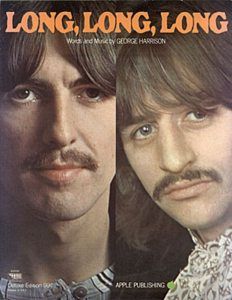 As the years went on, however, George began to distance himself from the thought of "Something" being written about his then wife. "Everybody assumed I wrote it about Pattie," he complained in 1996. Author Joshua Green attests to George explaining to his friends from the Hare Krishna Movement that the song was directed to Krishna himself. While he did admit to writing love songs directed to God (as with "Long, Long, Long" from the "White Album"), referring to his creator as "she" and as a "lover," as in the lyrics to "Something," would be somewhat unusual for him. As the years went on, however, George began to distance himself from the thought of "Something" being written about his then wife. "Everybody assumed I wrote it about Pattie," he complained in 1996. Author Joshua Green attests to George explaining to his friends from the Hare Krishna Movement that the song was directed to Krishna himself. While he did admit to writing love songs directed to God (as with "Long, Long, Long" from the "White Album"), referring to his creator as "she" and as a "lover," as in the lyrics to "Something," would be somewhat unusual for him.
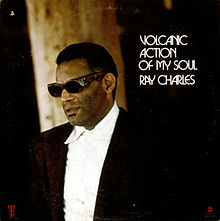 As far as musical inspiration, George explained at the time: “When I wrote it, I imagined somebody like Ray Charles doing it. That's the feel I imagined, but because I'm not Ray Charles, you know, I'm sort of much more limited in what I can do, then it came out like this.” Ray Charles did record a version of it two years later, his version being released on his “Volcanic Action Of My Soul” album. George has stated, however, that his favorite cover versions of the song were by Smokey Robinson and James Brown. "It's just unbelievable the way James sings it and the arrangement is really beautiful. I've got it on my jukebox at home.". As far as musical inspiration, George explained at the time: “When I wrote it, I imagined somebody like Ray Charles doing it. That's the feel I imagined, but because I'm not Ray Charles, you know, I'm sort of much more limited in what I can do, then it came out like this.” Ray Charles did record a version of it two years later, his version being released on his “Volcanic Action Of My Soul” album. George has stated, however, that his favorite cover versions of the song were by Smokey Robinson and James Brown. "It's just unbelievable the way James sings it and the arrangement is really beautiful. I've got it on my jukebox at home.".
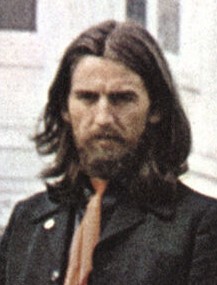 The other Beatles loved the song, but did its composer feel the same way? “The words are nothing, really," he said in 1969. "There are lots of songs like that in my head. I must get them down. Some people tell me that 'Something' is one of the best things I've ever written. I don't know. Maybe they're right, maybe they're wrong. It's very flattering though....It's nice. It's probably the nicest melody tune that I've written.” The other Beatles loved the song, but did its composer feel the same way? “The words are nothing, really," he said in 1969. "There are lots of songs like that in my head. I must get them down. Some people tell me that 'Something' is one of the best things I've ever written. I don't know. Maybe they're right, maybe they're wrong. It's very flattering though....It's nice. It's probably the nicest melody tune that I've written.”
Recording History
Apart from the studio time that was used for writing and rehearsing the song as outlined above, the first time George's song "Something" was purposely put down on tape in the studio was on February 25th, 1969.
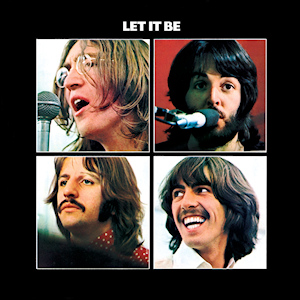 The future of The Beatles was somewhat uncertain at this point. The tapes from the month-long “Get Back / Let It Be” sessions were in a stack waiting for someone to go through and put in a releasable state, something that would be toiled over and then shelved because they were deemed unsuitable for public consumption. Legal problems were mounting regarding their Apple enterprise as well as managerial decisions. John's primary focus was on promoting his and Yoko Ono's artistic and demonstrative exploits, his attention to The Beatles being pushed far to the back of his mind. The future of The Beatles was somewhat uncertain at this point. The tapes from the month-long “Get Back / Let It Be” sessions were in a stack waiting for someone to go through and put in a releasable state, something that would be toiled over and then shelved because they were deemed unsuitable for public consumption. Legal problems were mounting regarding their Apple enterprise as well as managerial decisions. John's primary focus was on promoting his and Yoko Ono's artistic and demonstrative exploits, his attention to The Beatles being pushed far to the back of his mind.
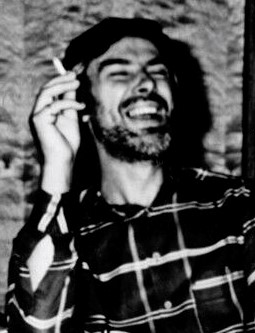 In the meantime, George was beginning to have a small backlog of songs which he felt somewhat strongly about, possibly wondering if he even had a band to record them with. Therefore, on his 26th birthday, February 25th, 1969, George brought engineer Ken Scott into one of the EMI Studios (time unknown) to record demos for three of his recently written compositions, no doubt as kind of a birthday present to himself. “George's material wasn't really paid all that much attention to,” producer Glyn Johns, who was also in the studio on this day, relates in Rolling Stone's “The Beatles: 100 Greatest Songs” special edition, “to such an extent that he asked me to stay behind...He was terribly nice, as if he was imposing on me.” In the meantime, George was beginning to have a small backlog of songs which he felt somewhat strongly about, possibly wondering if he even had a band to record them with. Therefore, on his 26th birthday, February 25th, 1969, George brought engineer Ken Scott into one of the EMI Studios (time unknown) to record demos for three of his recently written compositions, no doubt as kind of a birthday present to himself. “George's material wasn't really paid all that much attention to,” producer Glyn Johns, who was also in the studio on this day, relates in Rolling Stone's “The Beatles: 100 Greatest Songs” special edition, “to such an extent that he asked me to stay behind...He was terribly nice, as if he was imposing on me.”
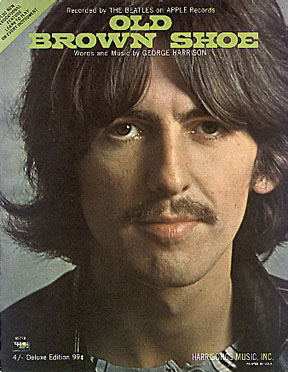 These demos were somewhat elaborate recordings using the studio's four-track recording equipment, George laying down multiple guitar parts, vocals and even piano at times. The first demo recorded on this day was “Old Brown Shoe,” which did get officially recorded by The Beatles in April and ended up as the b-side to “The Ballad Of John And Yoko.” The second demo of the day was the pretty “All Things Must Pass,” which the group did indeed pass on altogether, George recording it himself the following year for his first official solo album. These demos were somewhat elaborate recordings using the studio's four-track recording equipment, George laying down multiple guitar parts, vocals and even piano at times. The first demo recorded on this day was “Old Brown Shoe,” which did get officially recorded by The Beatles in April and ended up as the b-side to “The Ballad Of John And Yoko.” The second demo of the day was the pretty “All Things Must Pass,” which the group did indeed pass on altogether, George recording it himself the following year for his first official solo album.
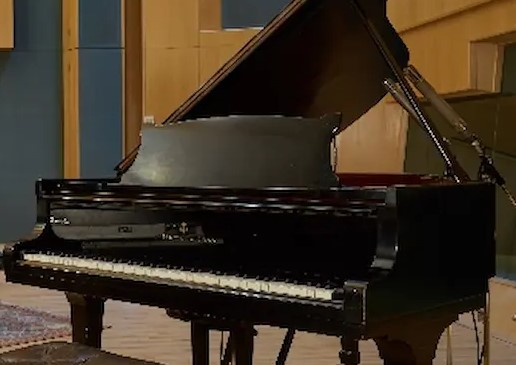 The third demo recorded during this February session, however, was the gorgeous “Something,” which was a very simple but effective version that does very well at bringing out the beauty of the melody. It was played in the key of A major, which was quite a bit lower than the C major home key of the final version. George first recorded himself singing and playing guitar simultaneously, his guitar isolated on track one and his vocals on track four of the four-track tape. He then filled tracks two and three with piano parts, creating a very nice instrumental balance. The lost verse mentioned above ("you know I love that woman of mine...") is featured here, which allows fans to see what he originally had in mind. George, however, had not worked out the dramatic conclusion of the song yet, this being figured out in the studio in later months. This demo ended with another verse played instrumentally with George adding in a final “you know I believe and how” just before he concludes the song with his final riff using a subtle raised chord as a nice touch. The 1996 compilation album "Anthology 3" features tracks one and four of this demo, while the full four tracks including both of George's piano performances are contained on the various 50th Anniversary editions of "Abbey Road." Beauty at its finest! The third demo recorded during this February session, however, was the gorgeous “Something,” which was a very simple but effective version that does very well at bringing out the beauty of the melody. It was played in the key of A major, which was quite a bit lower than the C major home key of the final version. George first recorded himself singing and playing guitar simultaneously, his guitar isolated on track one and his vocals on track four of the four-track tape. He then filled tracks two and three with piano parts, creating a very nice instrumental balance. The lost verse mentioned above ("you know I love that woman of mine...") is featured here, which allows fans to see what he originally had in mind. George, however, had not worked out the dramatic conclusion of the song yet, this being figured out in the studio in later months. This demo ended with another verse played instrumentally with George adding in a final “you know I believe and how” just before he concludes the song with his final riff using a subtle raised chord as a nice touch. The 1996 compilation album "Anthology 3" features tracks one and four of this demo, while the full four tracks including both of George's piano performances are contained on the various 50th Anniversary editions of "Abbey Road." Beauty at its finest!
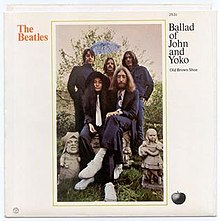 By mid-April, in the midst of business meetings and flared tempers, John and Paul had returned to the studio to record a brand new composition of John's that he was excited about titled “The Ballad Of John And Yoko.” With this as a catalyst, George thought to get the four of them together a couple days later, on April 16th, 1969, to officially start work on a couple of his demos from February. They entered EMI Studio Three at 7 pm to start work on “Old Brown Shoe,” which was George's primary focus on this day. After extensive work was done on this song, George turned their attention once again to "Something." In his 2021 Hulu documentary series "McCartney 3,2,1," Paul describes their process of working out the song's arrangement. "George comes in, shows us the song. That would just be with a guitar and all just 'round a couple of chairs around a little circle, and it was all fairly instant, y'know. It was just, 'We gotta do this song, we gotta do it, let's just try it every which way till we settle on, 'Oh yeah, this feels good.'...and then I'd butt in and they'd hate me for it! 'Well, it's a good idea, boys!" By mid-April, in the midst of business meetings and flared tempers, John and Paul had returned to the studio to record a brand new composition of John's that he was excited about titled “The Ballad Of John And Yoko.” With this as a catalyst, George thought to get the four of them together a couple days later, on April 16th, 1969, to officially start work on a couple of his demos from February. They entered EMI Studio Three at 7 pm to start work on “Old Brown Shoe,” which was George's primary focus on this day. After extensive work was done on this song, George turned their attention once again to "Something." In his 2021 Hulu documentary series "McCartney 3,2,1," Paul describes their process of working out the song's arrangement. "George comes in, shows us the song. That would just be with a guitar and all just 'round a couple of chairs around a little circle, and it was all fairly instant, y'know. It was just, 'We gotta do this song, we gotta do it, let's just try it every which way till we settle on, 'Oh yeah, this feels good.'...and then I'd butt in and they'd hate me for it! 'Well, it's a good idea, boys!"
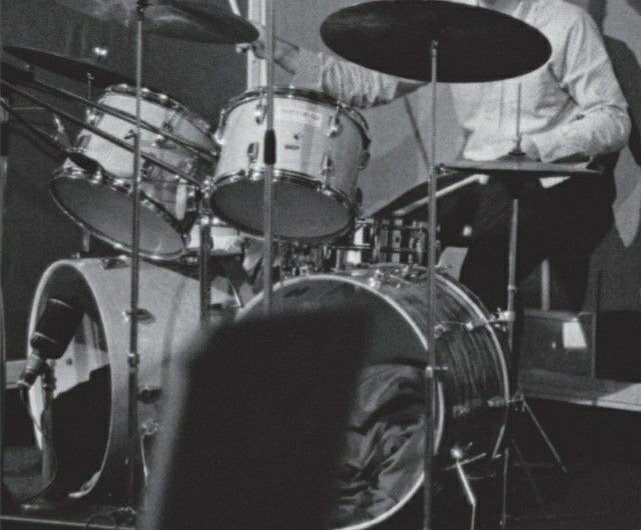 They recorded thirteen takes of “Something” on this day. Author Kevin Howlett, in his "Track By Track" section of the Super Deluxe 50th Anniversary edition of "Abbey Road," asserts that the instrumentation on these takes were John on bass (track one), Paul on drums (track two), George on electric guitar (track three) and George Martin on piano (track four), no vocals being recorded at this point. John, admittedly, was having a little trouble performing his bass part, stating "An ending already!" after "take nine," and "I missed two notes out" after "take 12." All of the work they did on "Something" on this day was for naught, unfortunately, because none of these takes were deemed worthy enough for overdubs, the session ending at 2:45 am the following morning after stereo mixes of “Old Brown Shoe” were made. George's beautiful ballad was put on the back-burner once again for another two weeks or so. They recorded thirteen takes of “Something” on this day. Author Kevin Howlett, in his "Track By Track" section of the Super Deluxe 50th Anniversary edition of "Abbey Road," asserts that the instrumentation on these takes were John on bass (track one), Paul on drums (track two), George on electric guitar (track three) and George Martin on piano (track four), no vocals being recorded at this point. John, admittedly, was having a little trouble performing his bass part, stating "An ending already!" after "take nine," and "I missed two notes out" after "take 12." All of the work they did on "Something" on this day was for naught, unfortunately, because none of these takes were deemed worthy enough for overdubs, the session ending at 2:45 am the following morning after stereo mixes of “Old Brown Shoe” were made. George's beautiful ballad was put on the back-burner once again for another two weeks or so.
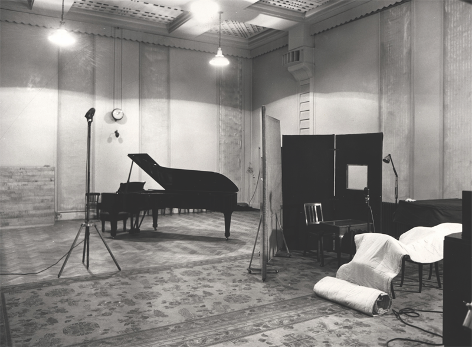 The Beatles, however, were back on a roll. With the thought of recording new songs possibly to spruce up the yet-to-be-released “Get Back / Let It Be” album, they started working on new material. This being the case, George thought to try again with “Something,” starting from scratch in EMI Studio Three on May 2nd, 1969, with Chris Thomas in the producer's chair, the session beginning around 7 pm. The Beatles, however, were back on a roll. With the thought of recording new songs possibly to spruce up the yet-to-be-released “Get Back / Let It Be” album, they started working on new material. This being the case, George thought to try again with “Something,” starting from scratch in EMI Studio Three on May 2nd, 1969, with Chris Thomas in the producer's chair, the session beginning around 7 pm.
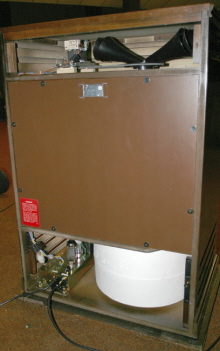 Totally disregarding the thirteen takes of the song they attempted two weeks prior, the takes of this re-make of “Something” began at "take one" again, a total of 36 takes being recorded this time around on the studio's eight-track machine. The instrumentation played on the official rhythm track, which was recorded on this day, has been debated by different sources, but all the evidence, audio as well as documentation, suggests the following: Paul on bass (track one), Ringo on drums (track two), George on electric guitar (track three) and John on piano (track four). After "take eight," George decided he wanted the sound of his guitar to also be put through a rotating Leslie speaker. Therefore, his guitar performance was simultaneously fed through this device, the result being captured onto track six of the tape from "take nine" onward. No vocals were present on the recording as of yet. Totally disregarding the thirteen takes of the song they attempted two weeks prior, the takes of this re-make of “Something” began at "take one" again, a total of 36 takes being recorded this time around on the studio's eight-track machine. The instrumentation played on the official rhythm track, which was recorded on this day, has been debated by different sources, but all the evidence, audio as well as documentation, suggests the following: Paul on bass (track one), Ringo on drums (track two), George on electric guitar (track three) and John on piano (track four). After "take eight," George decided he wanted the sound of his guitar to also be put through a rotating Leslie speaker. Therefore, his guitar performance was simultaneously fed through this device, the result being captured onto track six of the tape from "take nine" onward. No vocals were present on the recording as of yet.
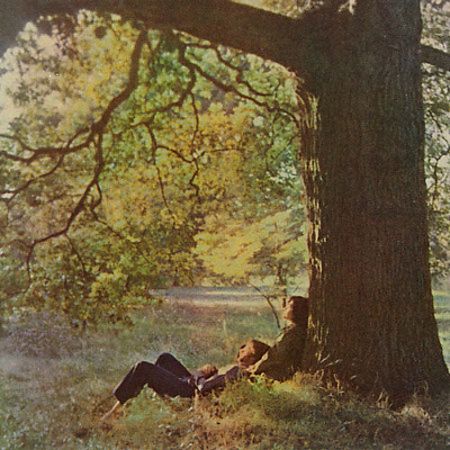 The group took a two hour break between 11 pm and 1 am, then resuming the rhythm track takes. At the conclusion of "take 27," John led the group into a coda based on a repetitive riff he had concocted on piano. He continued to do this at the end of various takes thereafter, the tape being stopped a few seconds into this ad lib performance each time. However, after "take 36" was concluded, John's piano ad lib went on for nearly five minutes, his band-mates vamping on with him. Author Mark Lewisohn, in his book “The Beatles Recording Sessions,” describes this as “a long, repetitious and somewhat rambling, piano-led four-note instrumental fade-out,” which extends "take 36" from 3:00 to 7:48. While "take 36" was determined to be the best performance of the rhythm track, this droning piano ending was omitted from the released recording, everyone involved deeming it unnecessary. It did resurface, however, as the basis for John's solo song “Remember” from his highly renowned 1970 album “Plastic Ono Band.” In any event, the session was finally complete at 3:40 am the following morning, overdubs being left for another day. The group took a two hour break between 11 pm and 1 am, then resuming the rhythm track takes. At the conclusion of "take 27," John led the group into a coda based on a repetitive riff he had concocted on piano. He continued to do this at the end of various takes thereafter, the tape being stopped a few seconds into this ad lib performance each time. However, after "take 36" was concluded, John's piano ad lib went on for nearly five minutes, his band-mates vamping on with him. Author Mark Lewisohn, in his book “The Beatles Recording Sessions,” describes this as “a long, repetitious and somewhat rambling, piano-led four-note instrumental fade-out,” which extends "take 36" from 3:00 to 7:48. While "take 36" was determined to be the best performance of the rhythm track, this droning piano ending was omitted from the released recording, everyone involved deeming it unnecessary. It did resurface, however, as the basis for John's solo song “Remember” from his highly renowned 1970 album “Plastic Ono Band.” In any event, the session was finally complete at 3:40 am the following morning, overdubs being left for another day.
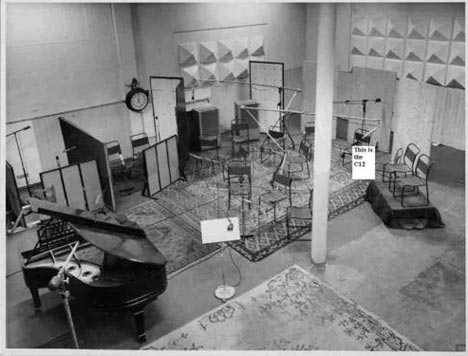 Apparently EMI Studios was not available the following week because The Beatles booked their next few sessions at London's Olympic Sound Studios. They arrived in Studio One at these facilities on May 5th, 1969 at 7:30 for the sole purpose of recording overdubs onto "take 36" of “Something,” the master tape being brought with them from EMI Studios. Although this session is documented to have stretched from 7:30 pm to 4 am the following morning, not very much was accomplished. Paul improved on his bass track and George did the same on his guitar track, which “The Beatles Recording Sessions” book indicates as being played through a Leslie speaker. Apparently EMI Studios was not available the following week because The Beatles booked their next few sessions at London's Olympic Sound Studios. They arrived in Studio One at these facilities on May 5th, 1969 at 7:30 for the sole purpose of recording overdubs onto "take 36" of “Something,” the master tape being brought with them from EMI Studios. Although this session is documented to have stretched from 7:30 pm to 4 am the following morning, not very much was accomplished. Paul improved on his bass track and George did the same on his guitar track, which “The Beatles Recording Sessions” book indicates as being played through a Leslie speaker.
 Although Geoff Emerick was not documented as having been an engineer on this session, he gives a first hand account of some of the proceedings, indicating that he may very well have been present as he had been three weeks earlier during the recording of “The Ballad Of John And Yoko.” In his book “Here, There And Everywhere,” Geoff Emerick recalls: “George was clearly still holding a grudge against Paul, and it seemed that he got some degree of revenge during the recording of 'Something.' I couldn't help but notice that Harrison was actually giving Paul direction on how to play the bass, telling him repeatedly that he wanted the part greatly simplified. It was a first in all my years of working with The Beatles: George had never dared tell Paul what to do; he'd simply never asserted himself that way.” Although Geoff Emerick was not documented as having been an engineer on this session, he gives a first hand account of some of the proceedings, indicating that he may very well have been present as he had been three weeks earlier during the recording of “The Ballad Of John And Yoko.” In his book “Here, There And Everywhere,” Geoff Emerick recalls: “George was clearly still holding a grudge against Paul, and it seemed that he got some degree of revenge during the recording of 'Something.' I couldn't help but notice that Harrison was actually giving Paul direction on how to play the bass, telling him repeatedly that he wanted the part greatly simplified. It was a first in all my years of working with The Beatles: George had never dared tell Paul what to do; he'd simply never asserted himself that way.”
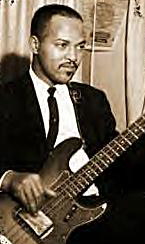 In the “Beatles Anthology” book, Paul concurs. "I think George thought my bass-playing was a little bit busy. Again, from my side, I was trying to contribute the best I could, but maybe it was his turn to tell me I was too busy. But that was fun; that went off well." In Paul's "McCartney 3,2,1" documentary, he elaborates: "It's very tempting when you're on the bass...and I probably start simple, then you might find that the bit we were kind of liking, it's a nice little melody. It's pretty adventurous...I did get sort of reprimanded once or twice for just being too busy. But, y'know, by that time I heard (Motown bassist) James Jamison. He was great. He had melodic bass lines and I loved that. I kind of opened my eyes to it. It was like, 'ah, yeah, wow, a groove, make it move, yeah!'...You can actually control the band with the bass.” In the “Beatles Anthology” book, Paul concurs. "I think George thought my bass-playing was a little bit busy. Again, from my side, I was trying to contribute the best I could, but maybe it was his turn to tell me I was too busy. But that was fun; that went off well." In Paul's "McCartney 3,2,1" documentary, he elaborates: "It's very tempting when you're on the bass...and I probably start simple, then you might find that the bit we were kind of liking, it's a nice little melody. It's pretty adventurous...I did get sort of reprimanded once or twice for just being too busy. But, y'know, by that time I heard (Motown bassist) James Jamison. He was great. He had melodic bass lines and I loved that. I kind of opened my eyes to it. It was like, 'ah, yeah, wow, a groove, make it move, yeah!'...You can actually control the band with the bass.”
After one additional recording session the following day, which began the recording of Paul's “You Never Give Me Your Money,” The Beatles began a hiatus from the recording studio that lasted nearly two months, the exact future of the group still up in the air.
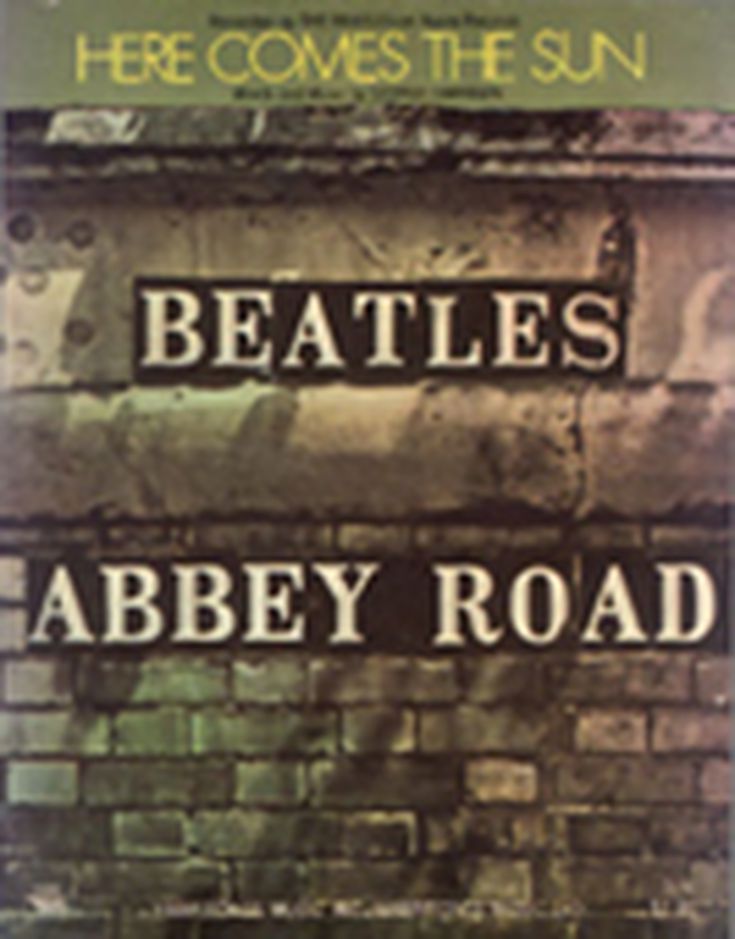 During this two month hiatus, it was decided that The Beatles would record one final album which would include the few newer songs they had been working on since February. These songs would not be included on any “Get Back / Let It Be” album after all, those January sessions being shelved for release at a future time. Starting on July 1st, 1969, The Beatles would concentrate on creating one final masterpiece album, this becoming “Abbey Road.” During this two month hiatus, it was decided that The Beatles would record one final album which would include the few newer songs they had been working on since February. These songs would not be included on any “Get Back / Let It Be” album after all, those January sessions being shelved for release at a future time. Starting on July 1st, 1969, The Beatles would concentrate on creating one final masterpiece album, this becoming “Abbey Road.”
The Beatles then began working in earnest completing the songs they had recently started to record, as well as introducing new compositions. George even introduced a brand new song to the group entitled “Here Comes The Sun” which they began work on even before returning their attention to “Something.”
 On July 11th, 1969, the group did return their attention back to “Something,” the group entering EMI Studio Two at around 2:30 pm on that day. After some slight work on Paul's song “Maxwell's Silver Hammer,” George recorded his first lead vocal onto “Something” as well as, according to Kevin Howlett, Billy Preston playing organ. These overdubs being accomplished, producer George Martin and engineers Phil McDonald and John Kurlander created four rough stereo remixes of the song as it stood at that moment. A reduction mix was then made which turned "take 36" into "take 37." After a little more work on Paul's “You Never Give Me Your Money,” they called it a day at around midnight. On July 11th, 1969, the group did return their attention back to “Something,” the group entering EMI Studio Two at around 2:30 pm on that day. After some slight work on Paul's song “Maxwell's Silver Hammer,” George recorded his first lead vocal onto “Something” as well as, according to Kevin Howlett, Billy Preston playing organ. These overdubs being accomplished, producer George Martin and engineers Phil McDonald and John Kurlander created four rough stereo remixes of the song as it stood at that moment. A reduction mix was then made which turned "take 36" into "take 37." After a little more work on Paul's “You Never Give Me Your Money,” they called it a day at around midnight.
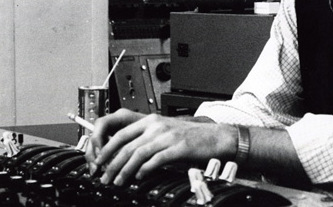 A noteworthy point here is that "Something" still contained 2:32 of the “rambling” piano-led fade-out of the song, the complete track lasting a total of 5:32 after the reduction mix was made. This would seem to indicate that they were considering leaving in a sizable portion of this aimless noodling at the end of the song, fading it out after a while. Luckily a decision was made to cut it off entirely at a later stage in the recording process. A noteworthy point here is that "Something" still contained 2:32 of the “rambling” piano-led fade-out of the song, the complete track lasting a total of 5:32 after the reduction mix was made. This would seem to indicate that they were considering leaving in a sizable portion of this aimless noodling at the end of the song, fading it out after a while. Luckily a decision was made to cut it off entirely at a later stage in the recording process.
 Attention went to “Something” yet again during the second recording session held on July 16th, 1969, in EMI Studio Three. This session began at 7 pm with full attention being put on George's song, he improving on his lead vocal while Paul added backing vocals and the two of them along with Ringo provided handclaps. Ringo also added additional cymbals and percussion onto track four, thus recording over John's piano performance from the original rhythm track. Interestingly, these overdubs were recorded onto "take 36," which totally disregarded the "take 37" reduction mix that was made on July 11th. Attention went to “Something” yet again during the second recording session held on July 16th, 1969, in EMI Studio Three. This session began at 7 pm with full attention being put on George's song, he improving on his lead vocal while Paul added backing vocals and the two of them along with Ringo provided handclaps. Ringo also added additional cymbals and percussion onto track four, thus recording over John's piano performance from the original rhythm track. Interestingly, these overdubs were recorded onto "take 36," which totally disregarded the "take 37" reduction mix that was made on July 11th.
 Geoff Emerick was present on this day as well, recounting the following: “George was once again very nervous when it came time to do the vocal. No matter what we did to create a vibe – turning the lights down low, lighting incense – he just couldn't get comfortable. It was a difficult song to sing, but in the end he did a magnificent job...It was interesting: George never seemed to get cold feet doing backing vocals, but whenever he had to do a lead vocal, he'd lose his confidence.” Geoff Emerick was present on this day as well, recounting the following: “George was once again very nervous when it came time to do the vocal. No matter what we did to create a vibe – turning the lights down low, lighting incense – he just couldn't get comfortable. It was a difficult song to sing, but in the end he did a magnificent job...It was interesting: George never seemed to get cold feet doing backing vocals, but whenever he had to do a lead vocal, he'd lose his confidence.”
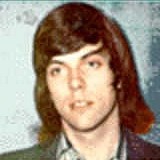 All eight tracks of the tape were filled now, which meant that a tape reduction was needed. George Martin, Phil McDonald and young engineer Alan Parsons created this reduction mix, two attempts being made. George Harrison was indeed present when the reduction mixes were made, his voice being heard on the tape reminding Phil McDonald that the latter mix should be numbered "take 39." All eight tracks of the tape were filled now, which meant that a tape reduction was needed. George Martin, Phil McDonald and young engineer Alan Parsons created this reduction mix, two attempts being made. George Harrison was indeed present when the reduction mixes were made, his voice being heard on the tape reminding Phil McDonald that the latter mix should be numbered "take 39."
 With the deadline for completion of the “Abbey Road” album looming, George was concerned as to whether his two songs on the album were acceptable for inclusion on the album or not. With this in mind, he ducked into the control room of EMI Studio Three on August 4th, 1969 at around 7:15 pm, just after the vocal harmony work on John's “Because” had been completed, to have engineers Phil McDonald and Alan Parsons make rough stereo mixes of both “Here Comes The Sun” and “Something.” These mixes revealed to George that more work was required for both songs, an acetate of “Something” being made to give to George Martin in order for him to write an orchestral score for the song. At 8:45 pm, he possibly popped back into EMI Studio Two to give George Martin this acetate disc, that session ending at 9 pm. With the deadline for completion of the “Abbey Road” album looming, George was concerned as to whether his two songs on the album were acceptable for inclusion on the album or not. With this in mind, he ducked into the control room of EMI Studio Three on August 4th, 1969 at around 7:15 pm, just after the vocal harmony work on John's “Because” had been completed, to have engineers Phil McDonald and Alan Parsons make rough stereo mixes of both “Here Comes The Sun” and “Something.” These mixes revealed to George that more work was required for both songs, an acetate of “Something” being made to give to George Martin in order for him to write an orchestral score for the song. At 8:45 pm, he possibly popped back into EMI Studio Two to give George Martin this acetate disc, that session ending at 9 pm.
 A week and a half later, on August 15th, 1969, George Martin had the orchestral score ready not only for “Something,” but also for three other “Abbey Road” songs that an orchestra was required for. “So far, every instrument on 'Abbey Road' had been played by one of the four Beatles,” Geoff Emerick relates, not realizing that Billy Preston did appear on some earlier tracks, including "Something," that he wasn't present for. "That was fine with John, but not with Paul or George Harrison, both of whom wanted orchestral instruments added to a few of their songs. Accordingly, George Martin wrote some arrangements and booked London's top players for a single marathon session.” Because the deadline for finishing the album was close, and in order to save money, one day was set aside to record the orchestral arrangements for all four of these songs, these being “Golden Slumbers / Carry That Weight,” “The End,” “Something” and “Here Comes The Sun.” The day chosen was August 15th, 1969. A week and a half later, on August 15th, 1969, George Martin had the orchestral score ready not only for “Something,” but also for three other “Abbey Road” songs that an orchestra was required for. “So far, every instrument on 'Abbey Road' had been played by one of the four Beatles,” Geoff Emerick relates, not realizing that Billy Preston did appear on some earlier tracks, including "Something," that he wasn't present for. "That was fine with John, but not with Paul or George Harrison, both of whom wanted orchestral instruments added to a few of their songs. Accordingly, George Martin wrote some arrangements and booked London's top players for a single marathon session.” Because the deadline for finishing the album was close, and in order to save money, one day was set aside to record the orchestral arrangements for all four of these songs, these being “Golden Slumbers / Carry That Weight,” “The End,” “Something” and “Here Comes The Sun.” The day chosen was August 15th, 1969.
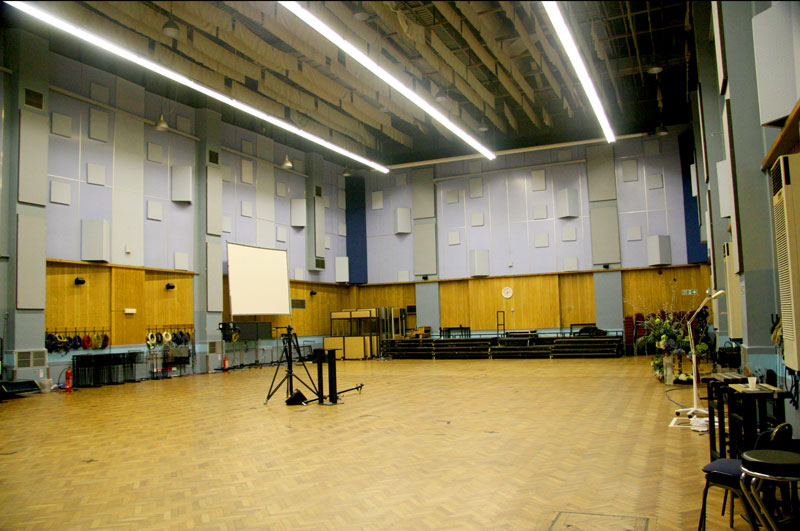 Engineer Geoff Emerick then continues: "Unfortunately, EMI had still not installed an eight-track tape recorder or large-scale console into the Studio One control room, so we were forced to set up a complicated system of audio tie-lines and closed-circuit television that allowed the musicians to be seated in the larger Studio One while we recorded them in the control room of Studio Two." Engineer Phil McDonald, in the book “The Beatles Recording Sessions,” explains how primitively these studios were linked together for similar situations prior to this one, where “the linking was subject to the vagaries of voice: 'All right, Bert? Are you ready?'” Engineer Geoff Emerick then continues: "Unfortunately, EMI had still not installed an eight-track tape recorder or large-scale console into the Studio One control room, so we were forced to set up a complicated system of audio tie-lines and closed-circuit television that allowed the musicians to be seated in the larger Studio One while we recorded them in the control room of Studio Two." Engineer Phil McDonald, in the book “The Beatles Recording Sessions,” explains how primitively these studios were linked together for similar situations prior to this one, where “the linking was subject to the vagaries of voice: 'All right, Bert? Are you ready?'”
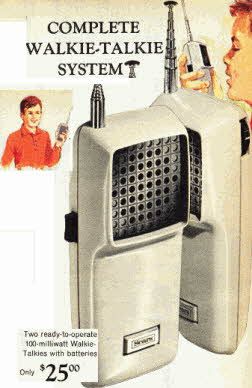 Technician Alan Brown also recalls the events of this day. “It was a mammoth session. We had a large number of lines linking the studios and we were all walking around the building with walkie-talkies trying to communicate with each other...It cost a lot of money: all the musicians have to be paid, fed and watered; I screw every pound note out of it whenever I play the record!” Technician Alan Brown also recalls the events of this day. “It was a mammoth session. We had a large number of lines linking the studios and we were all walking around the building with walkie-talkies trying to communicate with each other...It cost a lot of money: all the musicians have to be paid, fed and watered; I screw every pound note out of it whenever I play the record!”
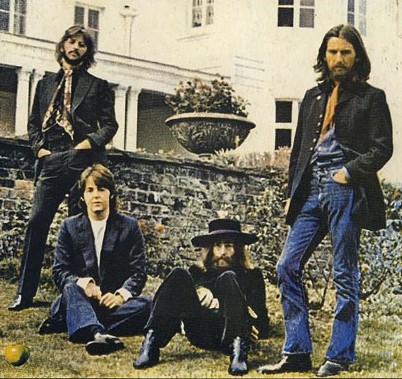 The orchestra was recorded in two sessions on this day, the afternoon session being used to record Paul's two compositions and, after an hour-and-a-half break, the evening session for recording both of George's songs, “Something” being the first to be tackled starting at 7 pm. “A lot of time and effort went into 'Something,' which was very unusual for a Harrison song,” Geoff Emerick remembers, “but everyone seemed aware of just how good a song it was, even though nobody went out of his way to say so. That's just the way The Beatles were: compliments were few and far between – you could always tell more about the way they were thinking by the expressions on their faces.” The orchestra was recorded in two sessions on this day, the afternoon session being used to record Paul's two compositions and, after an hour-and-a-half break, the evening session for recording both of George's songs, “Something” being the first to be tackled starting at 7 pm. “A lot of time and effort went into 'Something,' which was very unusual for a Harrison song,” Geoff Emerick remembers, “but everyone seemed aware of just how good a song it was, even though nobody went out of his way to say so. That's just the way The Beatles were: compliments were few and far between – you could always tell more about the way they were thinking by the expressions on their faces.”
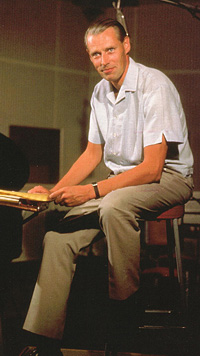 While Paul was the only Beatle in attendance for this afternoon session, George arrived for the evening session when his songs were being attended to. Geoff Emerick continues: “Phil McDonald, however, was there with me for the entire day – working in two studios at once really complicated things, and we needed the extra pair of hands. George Martin did the conducting while each Beatle essentially produced his own session. Thankfully, there were no major technical mishaps and everything worked smoothly.” While Paul was the only Beatle in attendance for this afternoon session, George arrived for the evening session when his songs were being attended to. Geoff Emerick continues: “Phil McDonald, however, was there with me for the entire day – working in two studios at once really complicated things, and we needed the extra pair of hands. George Martin did the conducting while each Beatle essentially produced his own session. Thankfully, there were no major technical mishaps and everything worked smoothly.”
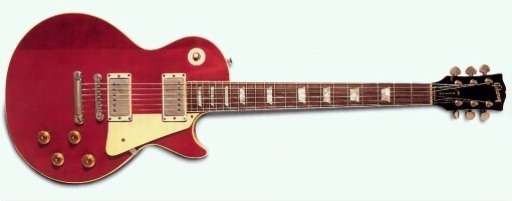 “The only hitch came when George Harrison announced that he wanted to redo the guitar solo on 'Something.' We were perfectly willing to accommodate him, but the problem was that there was only one track available, and we needed to use that for the orchestra. The only solution was for him to play it live, right along with the orchestra, so we could record them simultaneously on the same track. I was enormously impressed when he nonchalantly said, 'Okay, let's do that' – it took a lot of nerve and self-confidence to be willing to put himself under that kind of pressure. George had to play the solo correctly all the way through, without punch-ins, because the sound coming from his guitar amp would leak onto the other mics, and he wouldn't get a lot of whacks at it, because it was costing quite a lot to have that orchestra there. But he managed to play the intricate solo with ease, and by the end of the long night both his songs were completed and ready to be mixed.” “The only hitch came when George Harrison announced that he wanted to redo the guitar solo on 'Something.' We were perfectly willing to accommodate him, but the problem was that there was only one track available, and we needed to use that for the orchestra. The only solution was for him to play it live, right along with the orchestra, so we could record them simultaneously on the same track. I was enormously impressed when he nonchalantly said, 'Okay, let's do that' – it took a lot of nerve and self-confidence to be willing to put himself under that kind of pressure. George had to play the solo correctly all the way through, without punch-ins, because the sound coming from his guitar amp would leak onto the other mics, and he wouldn't get a lot of whacks at it, because it was costing quite a lot to have that orchestra there. But he managed to play the intricate solo with ease, and by the end of the long night both his songs were completed and ready to be mixed.”
 Mark Lewisohn, in “The Beatles Recording Sessions,” gives even more detail as to George Harrison's role on this day. “For 'Something,' George Harrison shuttled back and forth between studio one, where he shared the conductor's podium with George Martin for a time, and studio two, where he oversaw the sound recording, virtually as 'producer,' and where – on the floor of (studio one) – he taped a new and memorable lead guitar solo for the song's middle eighth – actually, barely different from the song's previous best guitar track.” After this elaborate overdub onto "take 39" of “Something” was complete, McCartney apparently present to overdub some descending piano piano notes onto the same track as George's guitar solo, they accomplished the same for “Here Comes The Sun” and ended the session by 1:15 am the following morning. Mark Lewisohn, in “The Beatles Recording Sessions,” gives even more detail as to George Harrison's role on this day. “For 'Something,' George Harrison shuttled back and forth between studio one, where he shared the conductor's podium with George Martin for a time, and studio two, where he oversaw the sound recording, virtually as 'producer,' and where – on the floor of (studio one) – he taped a new and memorable lead guitar solo for the song's middle eighth – actually, barely different from the song's previous best guitar track.” After this elaborate overdub onto "take 39" of “Something” was complete, McCartney apparently present to overdub some descending piano piano notes onto the same track as George's guitar solo, they accomplished the same for “Here Comes The Sun” and ended the session by 1:15 am the following morning.
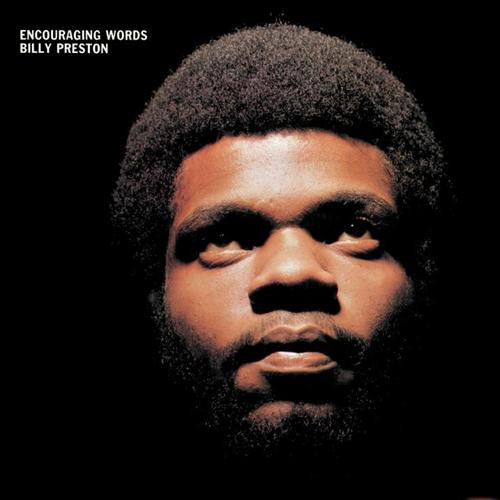 The final eight-track tape, according to Kevin Howlett's "Track By Track" section in the 50th Anniversary "Abbey Road" book, contains George's lead guitar parts and Paul's overdubbed descending piano notes (track one), Ringo's drums and overdubbed percussion (track two), the orchestra (tracks three and four), Paul's bass (track five), George's guitar played through a Leslie speaker (track six), George's double-tracked lead vocals and Paul's harmony vocals (track seven) and Billy Preston's organ (track eight). The final eight-track tape, according to Kevin Howlett's "Track By Track" section in the 50th Anniversary "Abbey Road" book, contains George's lead guitar parts and Paul's overdubbed descending piano notes (track one), Ringo's drums and overdubbed percussion (track two), the orchestra (tracks three and four), Paul's bass (track five), George's guitar played through a Leslie speaker (track six), George's double-tracked lead vocals and Paul's harmony vocals (track seven) and Billy Preston's organ (track eight).
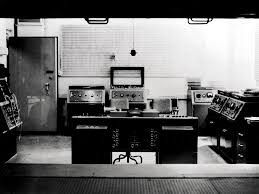 The stereo mix for “Something” was done on August 19th, 1969 in the control room of EMI Studio Two by George Martin and engineers Geoff Emerick, Phil McDonald and Alan Parsons. Ten attempts at this stereo mix were made, the tenth attempt undoubtedly being the keeper. With the addition of the orchestral arrangement, out went any trace of the rambling instrumental jam from the rhythm track that they apparently intended to end the song with up to this point, the recording staff omitting it from every one of these stereo mixes. The stereo mix for “Something” was done on August 19th, 1969 in the control room of EMI Studio Two by George Martin and engineers Geoff Emerick, Phil McDonald and Alan Parsons. Ten attempts at this stereo mix were made, the tenth attempt undoubtedly being the keeper. With the addition of the orchestral arrangement, out went any trace of the rambling instrumental jam from the rhythm track that they apparently intended to end the song with up to this point, the recording staff omitting it from every one of these stereo mixes.
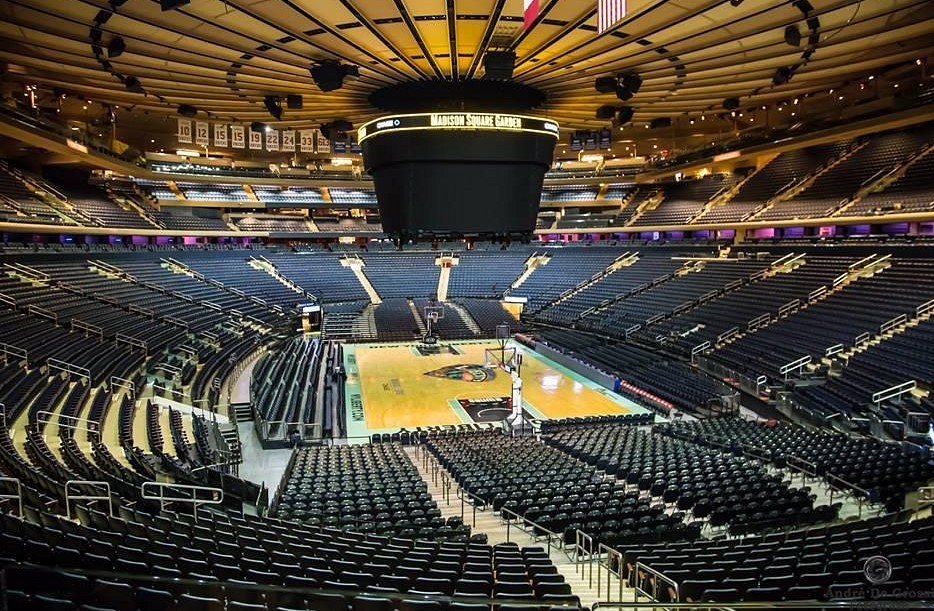 Two live versions of the song were also recorded and released during George's solo career. On August 1st, 1971, George and his band of celebrities (including Ringo) recorded a live version of “Something” that was featured in his groundbreaking “Concert For Bangladesh” at Madison Square Garden in New York City, this being released on the 1971 triple-album of the same name. Then, sometime between December 1st and 17th, 1991, George and his new group (including Eric Clapton) recorded another live version of the song during his brief Japanese tour, the result appearing on his 1992 album “Live In Japan.” Two live versions of the song were also recorded and released during George's solo career. On August 1st, 1971, George and his band of celebrities (including Ringo) recorded a live version of “Something” that was featured in his groundbreaking “Concert For Bangladesh” at Madison Square Garden in New York City, this being released on the 1971 triple-album of the same name. Then, sometime between December 1st and 17th, 1991, George and his new group (including Eric Clapton) recorded another live version of the song during his brief Japanese tour, the result appearing on his 1992 album “Live In Japan.”
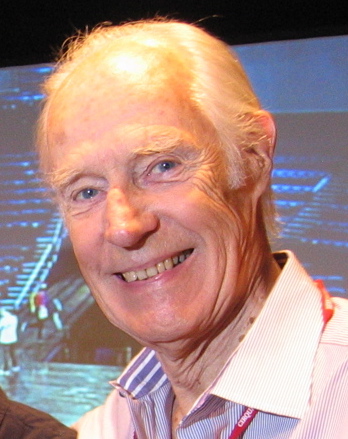 George Martin and Geoff Emerick created a mix of tracks one and four of the original demo that George Harrison made on February 25th, 1969 for inclusion on the 1996 Beatles compilation album “Anthology 3.” Then, sometime between 2004 and 2006, George Martin and his son Giles Martin returned to the master tape of “Something” to create a mash-up version for inclusion in the Cirque du Soleil production of “Love,” this being released on the companion album of the same name. This unique version was titled “Something (with 'Blue Jay Way' transition)" and also features elements of “Hey Bulldog,” “Nowhere Man” and, rumor has it, their 1967 sound experiment “Carnival Of Light." George Martin and Geoff Emerick created a mix of tracks one and four of the original demo that George Harrison made on February 25th, 1969 for inclusion on the 1996 Beatles compilation album “Anthology 3.” Then, sometime between 2004 and 2006, George Martin and his son Giles Martin returned to the master tape of “Something” to create a mash-up version for inclusion in the Cirque du Soleil production of “Love,” this being released on the companion album of the same name. This unique version was titled “Something (with 'Blue Jay Way' transition)" and also features elements of “Hey Bulldog,” “Nowhere Man” and, rumor has it, their 1967 sound experiment “Carnival Of Light."
 Giles Martin, along with engineer Sam Okell, returned to the master tapes of "Something" once again sometime in 2019 to create a new stereo mix of the song for inclusion in the 50th Anniversary releases of "Abbey Road" later that year. While they were at it, they also created a stereo mix of George's February 25th, 1969 demo, all four tracks being included this time around, as well as a beautiful stereo mix of George Martin's orchestral score on the finished song, both of these mixes being included on various editions of the 50th Anniversary releases of the album. Giles Martin, along with engineer Sam Okell, returned to the master tapes of "Something" once again sometime in 2019 to create a new stereo mix of the song for inclusion in the 50th Anniversary releases of "Abbey Road" later that year. While they were at it, they also created a stereo mix of George's February 25th, 1969 demo, all four tracks being included this time around, as well as a beautiful stereo mix of George Martin's orchestral score on the finished song, both of these mixes being included on various editions of the 50th Anniversary releases of the album.
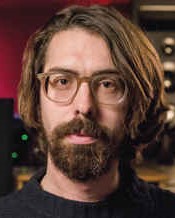 Sometime in 2021, Giles Martin and engineer Sam Okell were commissioned to create a new mix for an Anniversary version of the "Let It Be" album. In the process, they thought it would be interesting to include the above mentioned songwriting / rehearsal of the song "Something" as set to tape on January 28th, 1969 at Apple Studios. This mono mix included a good portion of the dialog and advice given regarding the lyrical writing of the song. Sometime in 2021, Giles Martin and engineer Sam Okell were commissioned to create a new mix for an Anniversary version of the "Let It Be" album. In the process, they thought it would be interesting to include the above mentioned songwriting / rehearsal of the song "Something" as set to tape on January 28th, 1969 at Apple Studios. This mono mix included a good portion of the dialog and advice given regarding the lyrical writing of the song.
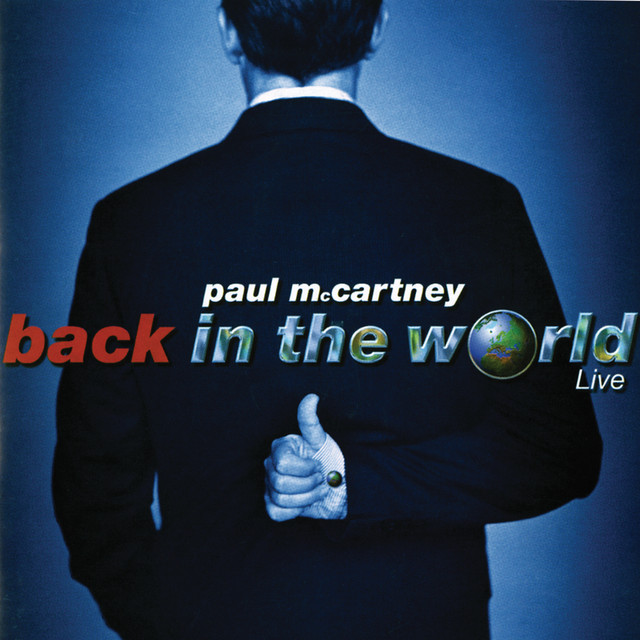 Paul recorded three versions of his rendition of George's "Something," the first of these live performances being sometime between April 1st, 2002 and May 18th, 2002, this appearing on his albums "Back In The US" and "Back In The World," the second being on November 29th, 2002 at London's Royal Albert Hall which appears on the album "Concert For George," and the third being sometime between July 17th and 21st, 2009 at Citi Field in New York City which appears on the album "Good Evening New York City." Paul recorded three versions of his rendition of George's "Something," the first of these live performances being sometime between April 1st, 2002 and May 18th, 2002, this appearing on his albums "Back In The US" and "Back In The World," the second being on November 29th, 2002 at London's Royal Albert Hall which appears on the album "Concert For George," and the third being sometime between July 17th and 21st, 2009 at Citi Field in New York City which appears on the album "Good Evening New York City."
Song Structure and Style
Beautifully written songs don't need to be complicated in structure. This is definitely the case with "Something," its format consisting of 'verse/ verse/ bridge/ verse (instrumental)/ verse' (or aabaa) with a simple introduction and a couple extra concluding measures added on at the end.
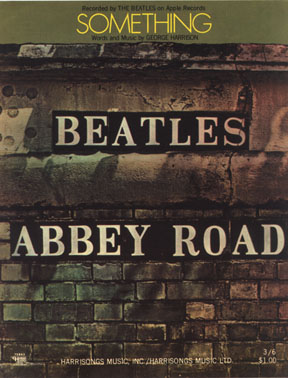 After a triplet-like drum fill from Ringo, the identifiable one-measure riff of the song, which is usually heard at the end of each verse, is used as the introduction to the song. This follows the pattern set by George Martin early in The Beatles career where he would suggest starting off the song with the most identifiable segment, such as with “She Loves You” and “Can't Buy Me Love,” instead of just plunging headlong into the first verse as presented by the composers. After a triplet-like drum fill from Ringo, the identifiable one-measure riff of the song, which is usually heard at the end of each verse, is used as the introduction to the song. This follows the pattern set by George Martin early in The Beatles career where he would suggest starting off the song with the most identifiable segment, such as with “She Loves You” and “Can't Buy Me Love,” instead of just plunging headlong into the first verse as presented by the composers.
 This quick but suitable introduction consists of George on both lead and rhythm guitar, Paul on bass and Ringo on drums playing accents on the three main beats of the riff, an overdubbed cymbal swell being heard at the end which crescendos at the downbeat of the first verse that follows. This is a delicate touch in arrangement that suits the song very nicely, it probably being a George Martin suggestion that was recorded during the orchestral performance. This quick but suitable introduction consists of George on both lead and rhythm guitar, Paul on bass and Ringo on drums playing accents on the three main beats of the riff, an overdubbed cymbal swell being heard at the end which crescendos at the downbeat of the first verse that follows. This is a delicate touch in arrangement that suits the song very nicely, it probably being a George Martin suggestion that was recorded during the orchestral performance.
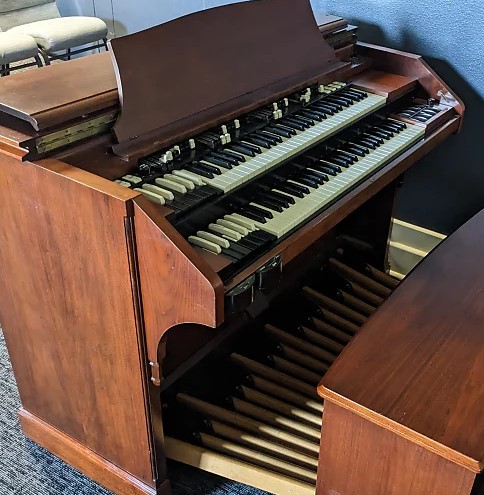 The first verse then appears, which is nine measures long with the final measure consisting of a repeat of the introductory riff. George sings single-tracked throughout the verse except for the seventh and eighth measures on the lines “I don't want to leave her now / you know I believe and how,” which is double-tracked. George's rhythm guitar and Paul's melodic bass line propel the verse while Billy Preston's Hammond organ works as a suitable pad to fill out the sound. The first verse then appears, which is nine measures long with the final measure consisting of a repeat of the introductory riff. George sings single-tracked throughout the verse except for the seventh and eighth measures on the lines “I don't want to leave her now / you know I believe and how,” which is double-tracked. George's rhythm guitar and Paul's melodic bass line propel the verse while Billy Preston's Hammond organ works as a suitable pad to fill out the sound.
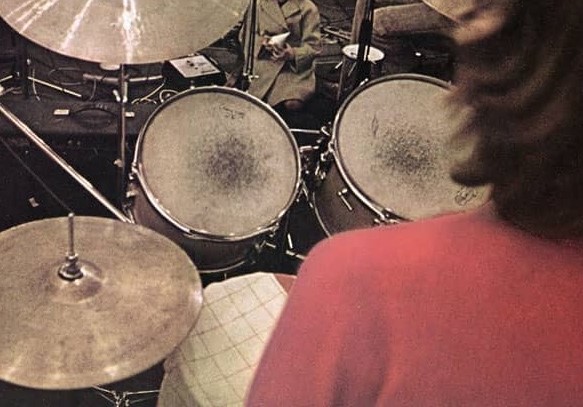 Ringo plods along simply and appropriately on drums, adding a sixteenth-note drum fill in the second measure and delicate accents on the snare and cymbal in the ninth measure. Another slight cymbal swell can be quietly detected that crescendos on the downbeat of the ninth measure. George kicks in with some lead guitar in the seventh through ninth measures, climaxing with the iconic guitar riff in the final measure. Billy Preston comes to the fore in the seventh and eighth measures with eighth-note chord stabs and then playing the guitar riff with George in the ninth measure, this transitioning into the second verse that follows. The orchestra subtly appears for the first time in measures seven through nine, playing lushly but quietly as a backdrop as it moves into a more prominent role for the second verse. Ringo plods along simply and appropriately on drums, adding a sixteenth-note drum fill in the second measure and delicate accents on the snare and cymbal in the ninth measure. Another slight cymbal swell can be quietly detected that crescendos on the downbeat of the ninth measure. George kicks in with some lead guitar in the seventh through ninth measures, climaxing with the iconic guitar riff in the final measure. Billy Preston comes to the fore in the seventh and eighth measures with eighth-note chord stabs and then playing the guitar riff with George in the ninth measure, this transitioning into the second verse that follows. The orchestra subtly appears for the first time in measures seven through nine, playing lushly but quietly as a backdrop as it moves into a more prominent role for the second verse.
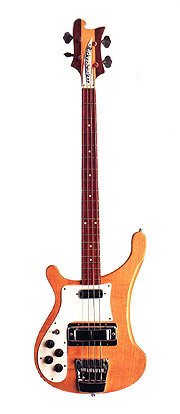 Verse two is similar in number of measures and in arrangement, but with the orchestra being more to the fore. Ringo does contribute an additional drum fill at the very end of measure six, this one being in triplet form again. The most notable difference in this verse, however, is the final note of the iconic guitar riff in the ninth measure that changes the last chord dramatically to A major instead of the usual C major. This acts as a climactic transition to the high energy bridge that follows. The ninth measure of this verse highlights Paul's less-than-subtle “lead bass” playing on his Rickenbacker 4001 S to get us to the bridge, a swirling organ sound from Billy Preston at the very end taking us there as well. Verse two is similar in number of measures and in arrangement, but with the orchestra being more to the fore. Ringo does contribute an additional drum fill at the very end of measure six, this one being in triplet form again. The most notable difference in this verse, however, is the final note of the iconic guitar riff in the ninth measure that changes the last chord dramatically to A major instead of the usual C major. This acts as a climactic transition to the high energy bridge that follows. The ninth measure of this verse highlights Paul's less-than-subtle “lead bass” playing on his Rickenbacker 4001 S to get us to the bridge, a swirling organ sound from Billy Preston at the very end taking us there as well.
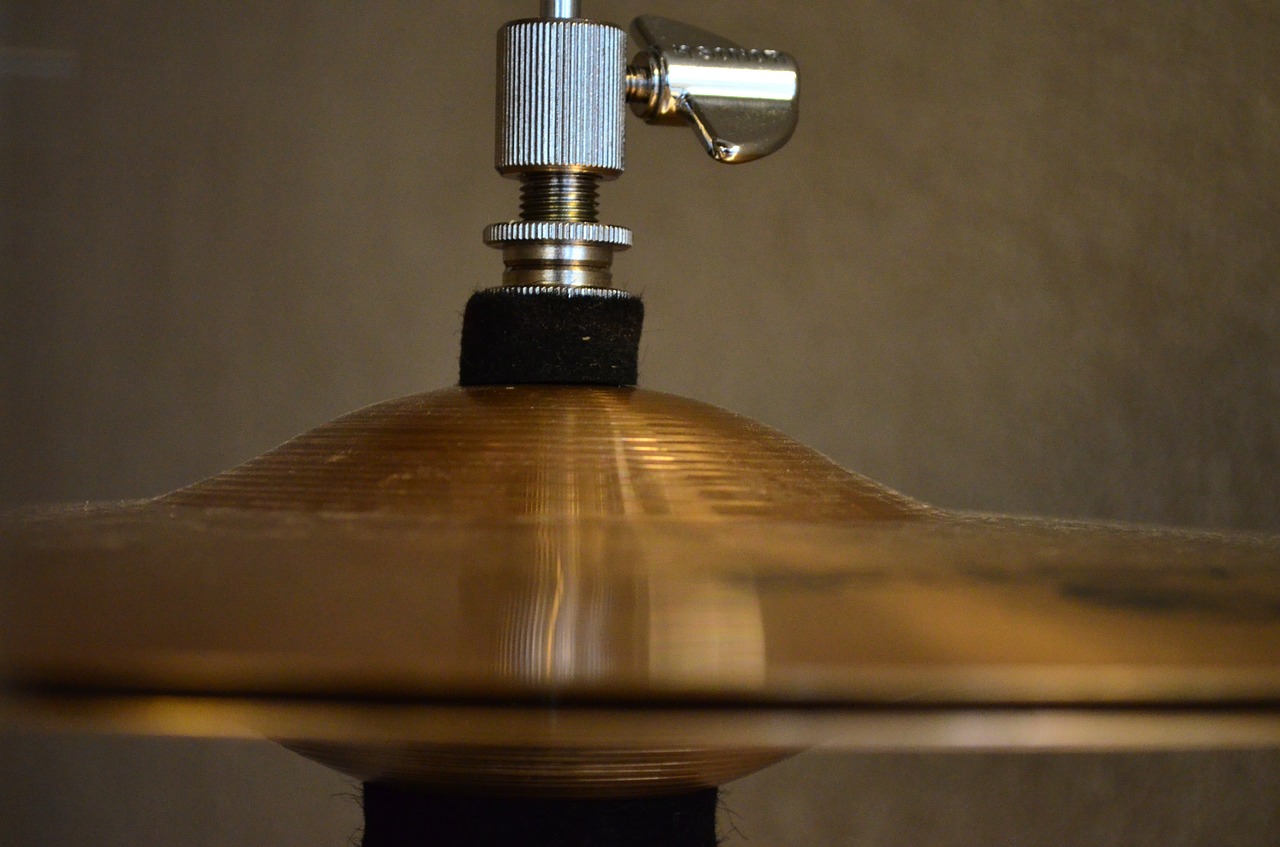 The bridge is a standard eight measures in length. George's lead vocals are double-tracked throughout, Paul providing a higher harmony to help elevate the emotional impact of the bridge. Ringo plays an alternating hi-hat and tom triplet beat in measures one, two and three, and then five, six and seven. In both measures four and eight, Ringo plays accents along with the rest of the instrumentation which descends down the scale per George's vocal instruction in his demo, measure four in the key of A major and measure eight going back to the home key of C major. The strings get quite lush for effect throughout the bridge, as does Billy's organ. George's rhythm guitar carries things along and, for the first time in the song, Paul's piano helps to fill the elaborate sound landscape, especially heard in the final measure as the song settles back into the home key. The bridge is a standard eight measures in length. George's lead vocals are double-tracked throughout, Paul providing a higher harmony to help elevate the emotional impact of the bridge. Ringo plays an alternating hi-hat and tom triplet beat in measures one, two and three, and then five, six and seven. In both measures four and eight, Ringo plays accents along with the rest of the instrumentation which descends down the scale per George's vocal instruction in his demo, measure four in the key of A major and measure eight going back to the home key of C major. The strings get quite lush for effect throughout the bridge, as does Billy's organ. George's rhythm guitar carries things along and, for the first time in the song, Paul's piano helps to fill the elaborate sound landscape, especially heard in the final measure as the song settles back into the home key.
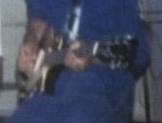 The instrumental verse is next which, of course, features George's fluid guitar solo which was played simultaneously with the lush string backdrop that is heard with it. The rhythm instruments, namely the guitar and organ, are more in the background to allow George's solo to shine, Paul's bass work slightly competing for attention but low enough in the mix so as not to distract. Ringo rides on the cymbal throughout this verse, performing fills in measures two and four, the latter one as an impressive fast roll on the toms. As the guitar solo evolves into the guitar riff in the ninth measure, Billy's organ chops swell into a dramatic conclusion of this section of the song. The instrumental verse is next which, of course, features George's fluid guitar solo which was played simultaneously with the lush string backdrop that is heard with it. The rhythm instruments, namely the guitar and organ, are more in the background to allow George's solo to shine, Paul's bass work slightly competing for attention but low enough in the mix so as not to distract. Ringo rides on the cymbal throughout this verse, performing fills in measures two and four, the latter one as an impressive fast roll on the toms. As the guitar solo evolves into the guitar riff in the ninth measure, Billy's organ chops swell into a dramatic conclusion of this section of the song.
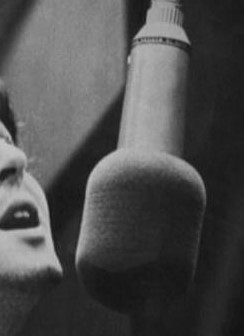 The final verse is then heard, which is twelve measures long to include the stellar conclusion. The instrumentation is identical to the second verse with its backdrop of orchestra, the most noticeable difference being Paul's effective higher vocal harmony throughout the first six measures. During the buildup of measures seven and eight, we hear an early lead guitar flourish in measure eight which resulted in George accidentally missing the first two notes of his iconic guitar riff in measure nine. Not to worry, though, because the orchestral score and Billy Preston's organ hits these notes for him. The final verse is then heard, which is twelve measures long to include the stellar conclusion. The instrumentation is identical to the second verse with its backdrop of orchestra, the most noticeable difference being Paul's effective higher vocal harmony throughout the first six measures. During the buildup of measures seven and eight, we hear an early lead guitar flourish in measure eight which resulted in George accidentally missing the first two notes of his iconic guitar riff in measure nine. Not to worry, though, because the orchestral score and Billy Preston's organ hits these notes for him.
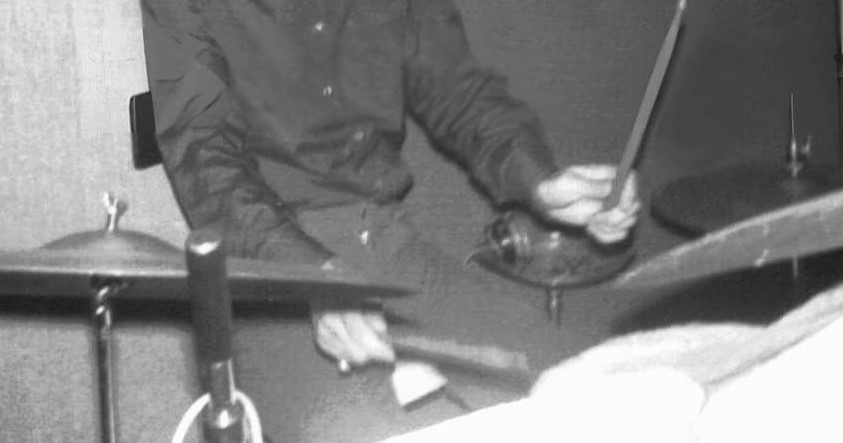 As a conclusion to the song, this riff takes us back up momentarily to A major as we heard at the end of verse two, but after a noteworthy high descending guitar flourish from George, we hear the riff played again with great volume and a feeling of finality, this time satisfactorily landing in the home key of C major with a final crashing cymbal and pulled guitar chord from George to ring out with the orchestra. Simply breathtaking! As a conclusion to the song, this riff takes us back up momentarily to A major as we heard at the end of verse two, but after a noteworthy high descending guitar flourish from George, we hear the riff played again with great volume and a feeling of finality, this time satisfactorily landing in the home key of C major with a final crashing cymbal and pulled guitar chord from George to ring out with the orchestra. Simply breathtaking!
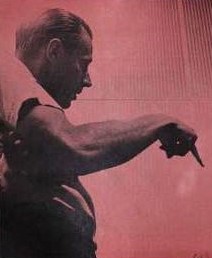 With full participation from all four Beatles as well as George Martin, George Harrison's beautiful ballad was given the well deserved attention that the song deserved. George's masterful lead guitar work shone brilliantly alongside his producer's unobtrusive but lush backdrop of strings. Paul's bass contribution weaves a counter-melody of sorts that works nicely to fill in the lyrical gaps while also putting in his usual talents as harmony vocalist. Ringo worked hard to play what would fit in perfectly within the arrangement, performing in top form. Billy Preston also put in an appropriate gospel-tinged element to the recording which did become an essential ingredient in the mix. Although a hand-clapping overdub is documented to have been recorded, it apparently was deemed inappropriate for the arrangement and was left off or recorded over. With full participation from all four Beatles as well as George Martin, George Harrison's beautiful ballad was given the well deserved attention that the song deserved. George's masterful lead guitar work shone brilliantly alongside his producer's unobtrusive but lush backdrop of strings. Paul's bass contribution weaves a counter-melody of sorts that works nicely to fill in the lyrical gaps while also putting in his usual talents as harmony vocalist. Ringo worked hard to play what would fit in perfectly within the arrangement, performing in top form. Billy Preston also put in an appropriate gospel-tinged element to the recording which did become an essential ingredient in the mix. Although a hand-clapping overdub is documented to have been recorded, it apparently was deemed inappropriate for the arrangement and was left off or recorded over.
American Releases
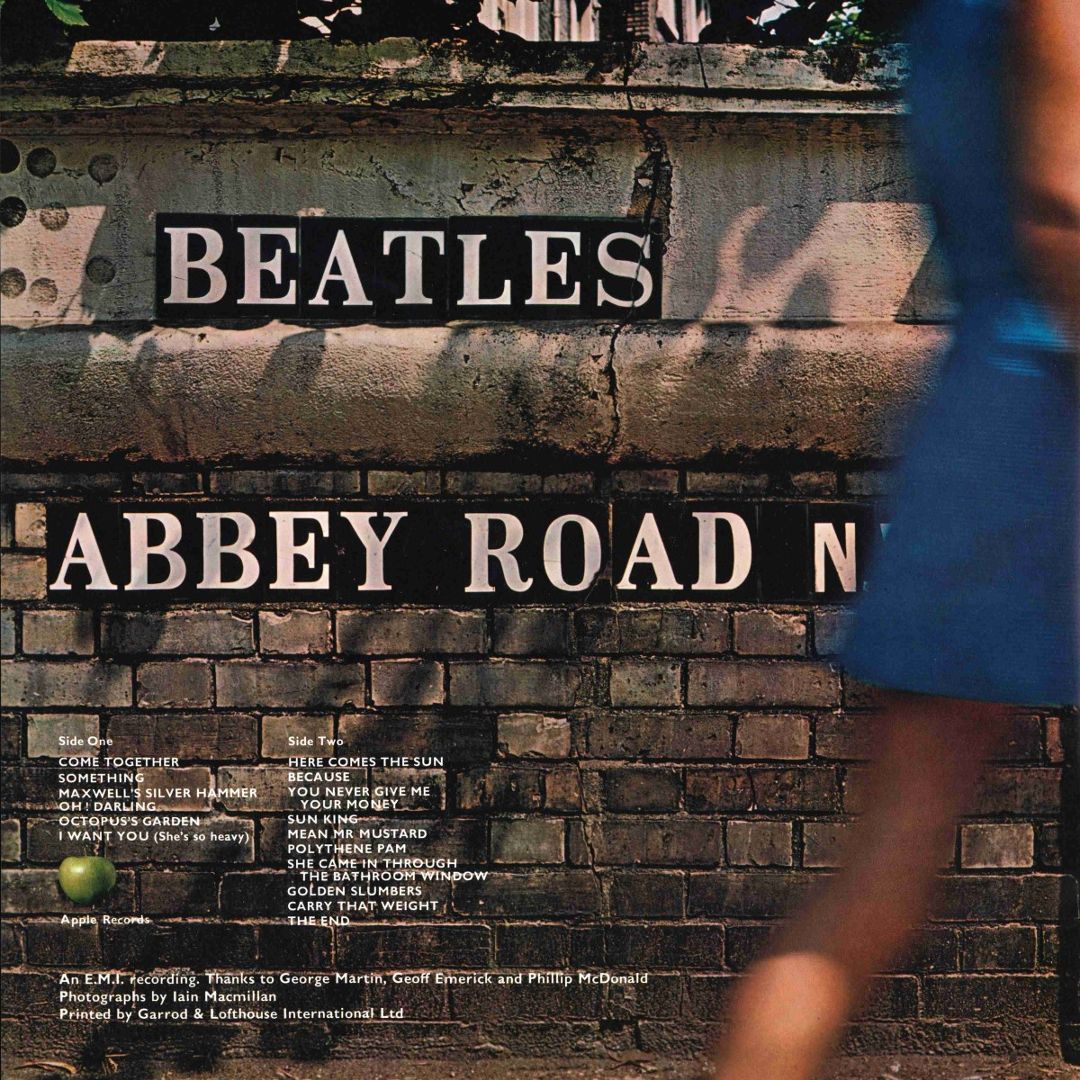 On October 1st, 1969, the final recorded Beatles album was released in America, simply titled "Abbey Road." The "Let It Be" album, which was released later on May 18th, 1970, was pretty much in the can at the end of January 1969 but was held up ultimately so that it could be released in conjunction with the movie of the same name that contained the music therein. "Something" was the second track on the "Abbey Road" album, creating a very impressive transition from the thumping rocker "Come Together" which started the LP off. On October 1st, 1969, the final recorded Beatles album was released in America, simply titled "Abbey Road." The "Let It Be" album, which was released later on May 18th, 1970, was pretty much in the can at the end of January 1969 but was held up ultimately so that it could be released in conjunction with the movie of the same name that contained the music therein. "Something" was the second track on the "Abbey Road" album, creating a very impressive transition from the thumping rocker "Come Together" which started the LP off.
 The album took only three weeks to jump into the top spot on the Billboard album chart, raking in a total of eleven weeks in the #1 position. The album first appeared on compact disc on October 10th, 1987, and then as a remastered release on September 9th, 2009. A newly mixed 50th Anniversary vinyl edition of the album was released on September 27th, 2019, not to mention an opaque green vinyl edition coming out on October 10th, 2025 as an exclusive release available only at Target Department Stores. The album took only three weeks to jump into the top spot on the Billboard album chart, raking in a total of eleven weeks in the #1 position. The album first appeared on compact disc on October 10th, 1987, and then as a remastered release on September 9th, 2009. A newly mixed 50th Anniversary vinyl edition of the album was released on September 27th, 2019, not to mention an opaque green vinyl edition coming out on October 10th, 2025 as an exclusive release available only at Target Department Stores.
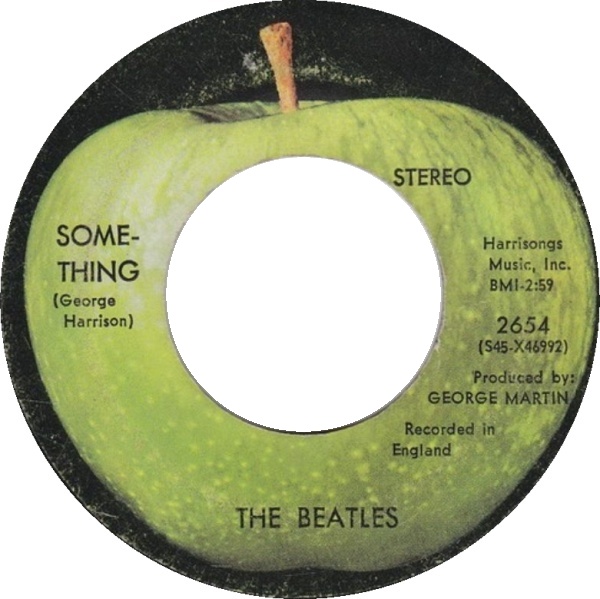 On October 6th, 1969, five days after “Abbey Road” was first released in the US, the first two tracks on the album were released as a single, “Come Together” and “Something,” the latter being placed as the a-side due to its overwhelming commercial appeal. The Beatles' new manager Allen Klein personally selected "Something" to be the a-side of this single because, according to his associate Allan Steckler, "(Allen) Klein believed in George's talent and wanted to enhance his reputation as a songwriter." With both sides of the single getting extensive airplay, the Billboard Hot 100 charted both “Something” and “Come Together” as a joint #1 single the week of November 29th, 1969. On October 6th, 1969, five days after “Abbey Road” was first released in the US, the first two tracks on the album were released as a single, “Come Together” and “Something,” the latter being placed as the a-side due to its overwhelming commercial appeal. The Beatles' new manager Allen Klein personally selected "Something" to be the a-side of this single because, according to his associate Allan Steckler, "(Allen) Klein believed in George's talent and wanted to enhance his reputation as a songwriter." With both sides of the single getting extensive airplay, the Billboard Hot 100 charted both “Something” and “Come Together” as a joint #1 single the week of November 29th, 1969.
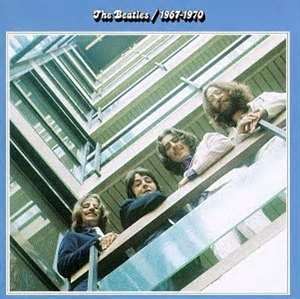 The next official release of the song was on April 2nd, 1973, on the second of two double-album compilations released on that day, namely “The Beatles / 1967-1970” (aka, the “Blue Album”). “Something” was featured as the third track on side four, still following “Come Together” as it had on the “Abbey Road” album. This #1 album was first released on compact disc on September 20th, 1993 and then as a remastered re-release on August 10th, 2010. The next official release of the song was on April 2nd, 1973, on the second of two double-album compilations released on that day, namely “The Beatles / 1967-1970” (aka, the “Blue Album”). “Something” was featured as the third track on side four, still following “Come Together” as it had on the “Abbey Road” album. This #1 album was first released on compact disc on September 20th, 1993 and then as a remastered re-release on August 10th, 2010.
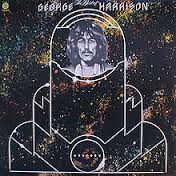 Interestingly, in the mid '70s, all four individual Beatles had solo "Greatest Hits" albums released, but only one of them dipped into their contributions to The Beatles catalog. "The Best Of George Harrison," which was released on November 8th, 1976, contained seven Harrison-penned Beatles songs on side one and six solo compositions on side two. "Something" was chosen as the lead off track of side one, undoubtedly because it was viewed as his most successful composition during the Beatles years. The album peaked at #31 on the Billboard album chart and was released on CD in 1987. Interestingly, in the mid '70s, all four individual Beatles had solo "Greatest Hits" albums released, but only one of them dipped into their contributions to The Beatles catalog. "The Best Of George Harrison," which was released on November 8th, 1976, contained seven Harrison-penned Beatles songs on side one and six solo compositions on side two. "Something" was chosen as the lead off track of side one, undoubtedly because it was viewed as his most successful composition during the Beatles years. The album peaked at #31 on the Billboard album chart and was released on CD in 1987.
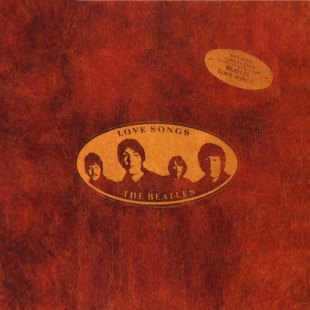 On October 21st, 1977, Capitol released yet another double-album compilation entitled “Love Songs,” which featured the lighter ballads the band had released during their career. This album was to be viewed somewhat as a companion release to the “Rock 'n' Roll Music” double-album that came out the previous year which featured the harder-edged songs of the group. Being the opening song of side two, “Something” finally shook off its connection to “Come Together” which wouldn't have fit the format of this album. The LP was mildly successful, peaking at #24 on the Billboard album chart, although it is said to have sold over three million copies throughout the years. On October 21st, 1977, Capitol released yet another double-album compilation entitled “Love Songs,” which featured the lighter ballads the band had released during their career. This album was to be viewed somewhat as a companion release to the “Rock 'n' Roll Music” double-album that came out the previous year which featured the harder-edged songs of the group. Being the opening song of side two, “Something” finally shook off its connection to “Come Together” which wouldn't have fit the format of this album. The LP was mildly successful, peaking at #24 on the Billboard album chart, although it is said to have sold over three million copies throughout the years.
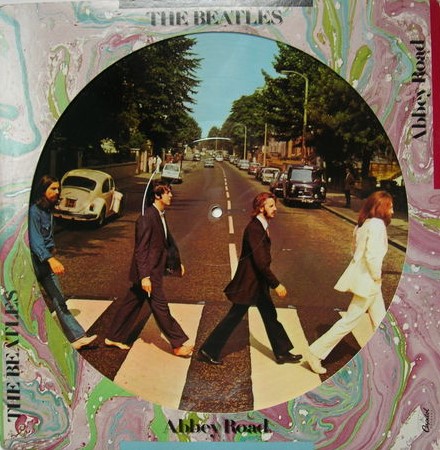 Sometime in 1978, Capitol re-released the "Abbey Road" album as a picture disc. Side one had the iconic front cover while side two contained a close-up of the wall photo of the back cover minus the song title listings. This picture disc was re-released with a new Giles Martin mix on 180-gram vinyl on September 27th, 2019. Sometime in 1978, Capitol re-released the "Abbey Road" album as a picture disc. Side one had the iconic front cover while side two contained a close-up of the wall photo of the back cover minus the song title listings. This picture disc was re-released with a new Giles Martin mix on 180-gram vinyl on September 27th, 2019.
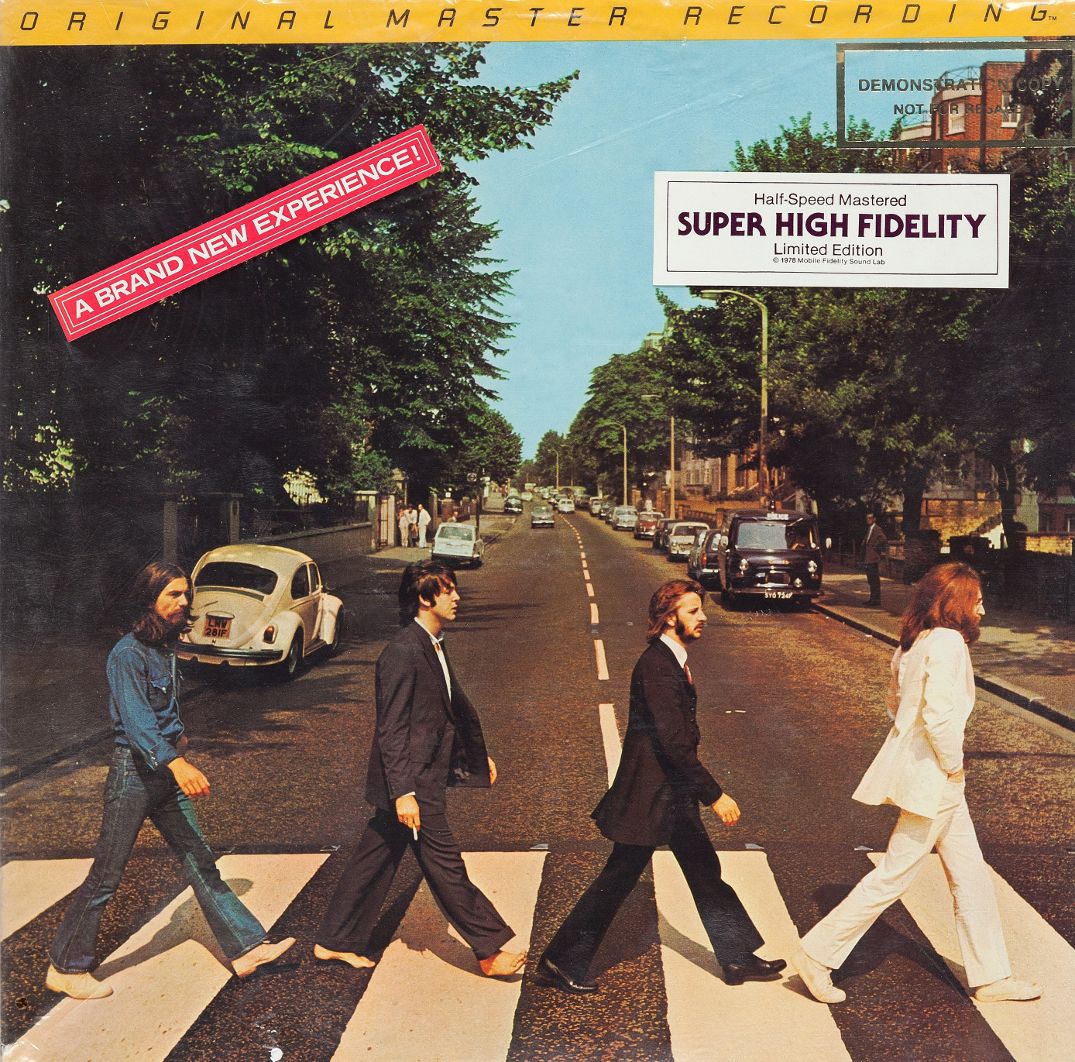 An interesting US vinyl edition of “Abbey Road” was released on December 28th, 1979, this being manufactured by Mobile Fidelity Sound Lab in Chatsworth, California as the first Beatles installment in their "Original Master Recording" series. Their practice was to prepare a new master utilizing half-speed mastering technology from the original master tapes, in this case using the leased sub-master from Capitol Records. Stickers on the shrinkwrap proclaimed this album as being “A Brand New Experience,” which proved to be the case. This version of the album sounded superior to all previous British and American pressings at that time. Unfortunately, this excellent edition of “Abbey Road” was only available for a short time and is quite collectible today. An interesting US vinyl edition of “Abbey Road” was released on December 28th, 1979, this being manufactured by Mobile Fidelity Sound Lab in Chatsworth, California as the first Beatles installment in their "Original Master Recording" series. Their practice was to prepare a new master utilizing half-speed mastering technology from the original master tapes, in this case using the leased sub-master from Capitol Records. Stickers on the shrinkwrap proclaimed this album as being “A Brand New Experience,” which proved to be the case. This version of the album sounded superior to all previous British and American pressings at that time. Unfortunately, this excellent edition of “Abbey Road” was only available for a short time and is quite collectible today.
Capitol re-released the original “Something / Come Together” single in January of 1994 on their “For Jukeboxes Only” Cema series, this single being printed in limited supply on blue vinyl and highly collectible.
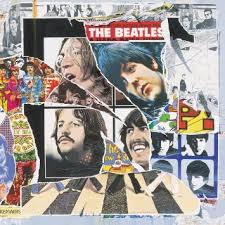 George's original demo of “Something,” as recorded on February 25th, 1969, was released on the compilation album “Anthology 3” on October 28th, 1996, although the mix used on this release only included George's guitar and vocal. George Martin couldn't resist releasing all three of Harrison's excellent demos that he recorded on his 26th birthday, “All Things Must Pass” and “Old Brown Shoe” included, on this compilation, feeling the world needed to hear the intricacy and beauty of all three. George's original demo of “Something,” as recorded on February 25th, 1969, was released on the compilation album “Anthology 3” on October 28th, 1996, although the mix used on this release only included George's guitar and vocal. George Martin couldn't resist releasing all three of Harrison's excellent demos that he recorded on his 26th birthday, “All Things Must Pass” and “Old Brown Shoe” included, on this compilation, feeling the world needed to hear the intricacy and beauty of all three.
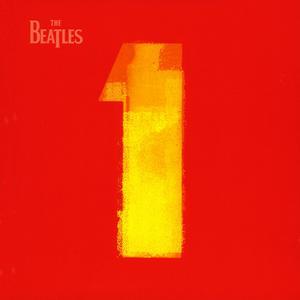 On November 13th, 2000, Apple released the highly successful single CD “Beatles 1” containing 27 songs, all of which hit the top position on the charts either in Britain or America. Since “Something” topped the charts in the US, it earned its rightful place on this excellent compilation album. This album topped the charts and eventually sold over 31 million copies worldwide as of 2017. A remastered version of the CD was released in September of 2011, while a newly mixed version was released on November 6th, 2015. On November 13th, 2000, Apple released the highly successful single CD “Beatles 1” containing 27 songs, all of which hit the top position on the charts either in Britain or America. Since “Something” topped the charts in the US, it earned its rightful place on this excellent compilation album. This album topped the charts and eventually sold over 31 million copies worldwide as of 2017. A remastered version of the CD was released in September of 2011, while a newly mixed version was released on November 6th, 2015.
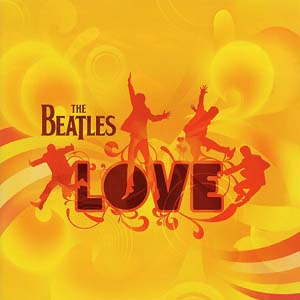 The above described new mix/mashup of “Something” was contained on the November 20th, 2006 release “Love,” which was put together by George Martin and his son Giles Martin to be used in conjunction with the Cirque du Soleil show of the same name. The track was titled “Something (with 'Blue Jay Way' transition)” which combined elements of both songs as well as others. This successful album peaked at #4 on the Billboard album chart. The above described new mix/mashup of “Something” was contained on the November 20th, 2006 release “Love,” which was put together by George Martin and his son Giles Martin to be used in conjunction with the Cirque du Soleil show of the same name. The track was titled “Something (with 'Blue Jay Way' transition)” which combined elements of both songs as well as others. This successful album peaked at #4 on the Billboard album chart.
In promotion of the remastered Beatles catalog, the "09.09.09 Sampler" was distributed to retailers and radio programmers on September 9th, 2009, "Something" being featured therein. This has become quite the find for collectors.
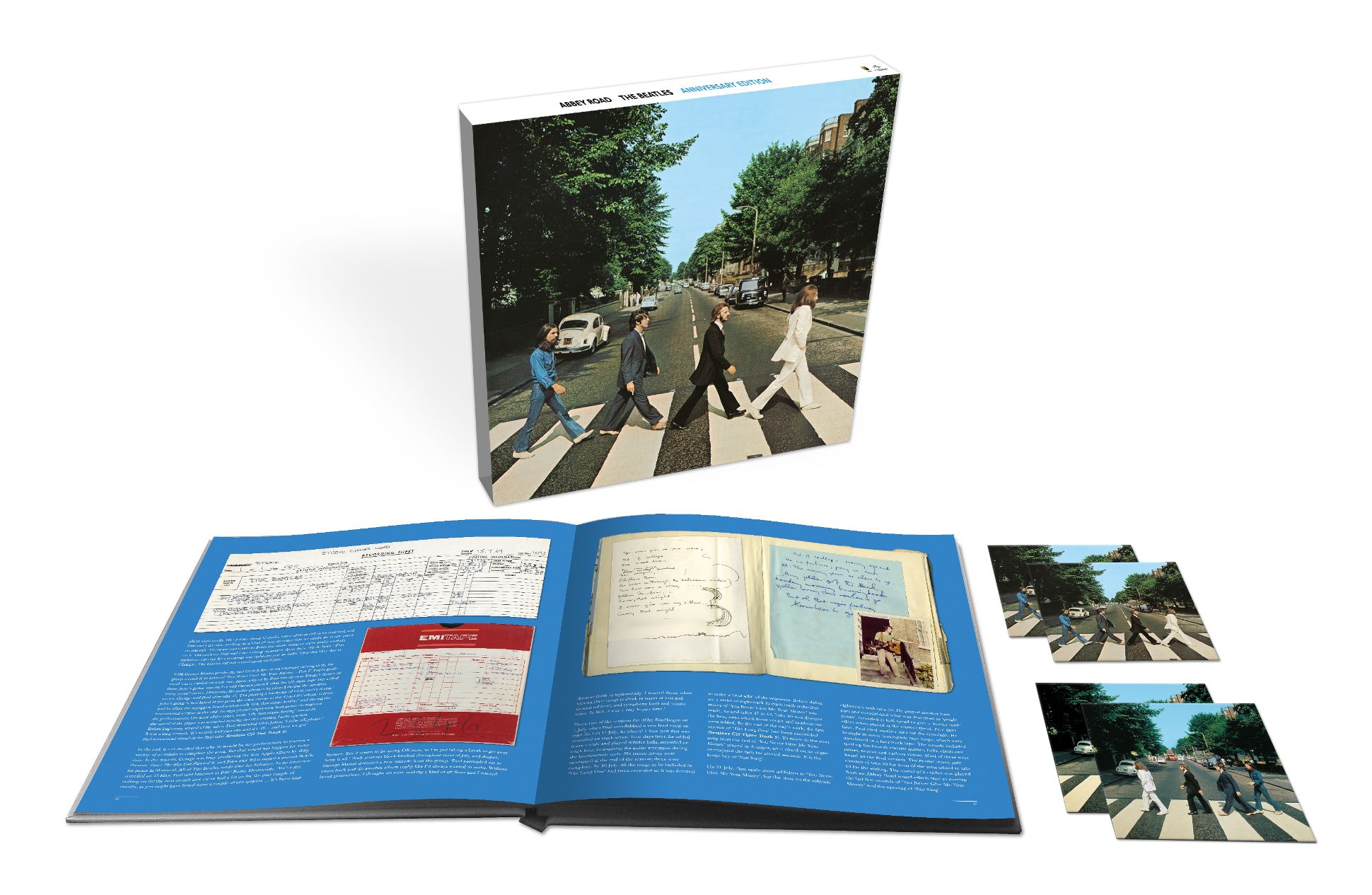 On September 27th, 2019, various editions of "Abbey Road" were released to commemorate its 50th Anniversary that featured interesting versions of "Something." The Deluxe edition, which was made available in a 2CD set, contains the newly created Giles Martin mix of the entire album and the full February 25th, 1969 demo that George recorded of "Something," while the "Super Deluxe" 3CD + Blu-ray edition and the "Triple Vinyl" edition contains both of these versions as well as "take 39," this being the beautiful orchestral score George Martin created for the song. On September 27th, 2019, various editions of "Abbey Road" were released to commemorate its 50th Anniversary that featured interesting versions of "Something." The Deluxe edition, which was made available in a 2CD set, contains the newly created Giles Martin mix of the entire album and the full February 25th, 1969 demo that George recorded of "Something," while the "Super Deluxe" 3CD + Blu-ray edition and the "Triple Vinyl" edition contains both of these versions as well as "take 39," this being the beautiful orchestral score George Martin created for the song.
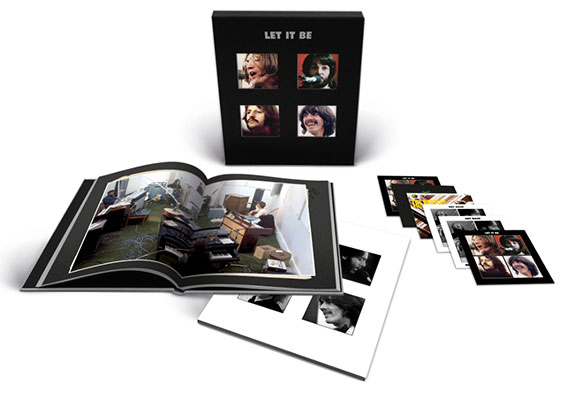 On October 15th, 2021, various editions of the "Let It Be" album were released, some of which featured an interesting version of "Something." The "Super Deluxe" 5CD + Blu-ray edition and the "Super Deluxe" 4LP + 1 12" EP edition include George's introduction of the song to the other Beatles on January 28th, 1969 at Apple Studios, including his inquiry as to finishing its lyrics. On October 15th, 2021, various editions of the "Let It Be" album were released, some of which featured an interesting version of "Something." The "Super Deluxe" 5CD + Blu-ray edition and the "Super Deluxe" 4LP + 1 12" EP edition include George's introduction of the song to the other Beatles on January 28th, 1969 at Apple Studios, including his inquiry as to finishing its lyrics.
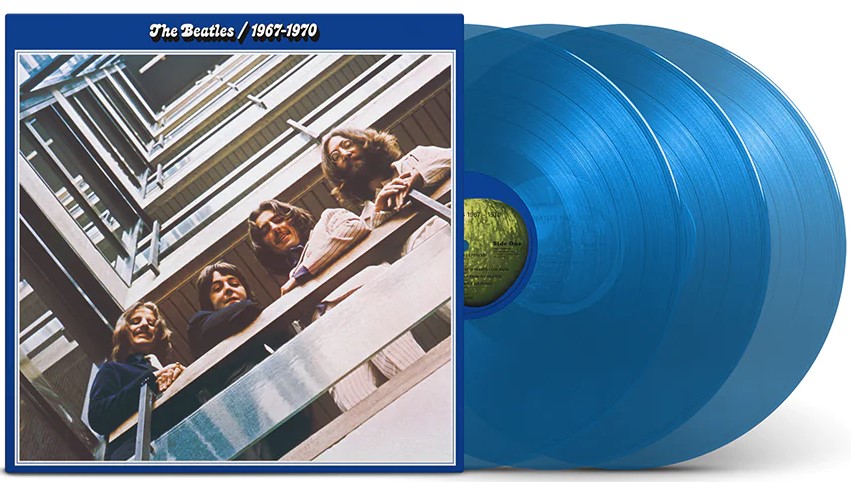 A 50th Anniversay edition of the compilation LP "The Beatles / 1967 - 1970" ("The Blue Album") was released on November 10th, 2023, the Giles Martin stereo mix of "Something" detailed above, being included. This expanded release included 12 additional songs for a total of 38 tracks, and was made available as a double CD and as a triple vinyl release on both black and blue vinyl. A 50th Anniversay edition of the compilation LP "The Beatles / 1967 - 1970" ("The Blue Album") was released on November 10th, 2023, the Giles Martin stereo mix of "Something" detailed above, being included. This expanded release included 12 additional songs for a total of 38 tracks, and was made available as a double CD and as a triple vinyl release on both black and blue vinyl.
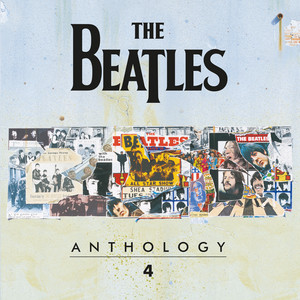 On November 21st, 2025, "Anthology 4" was released on both CD and vinyl, this album also being made available within the "Anthology Collection" box set on CD and on vinyl. "Take 39" of "Something" that featured George Martin's orchestral score as recorded in EMI Studio One on August 15th, 1969 was also included on this release as it had been on various 2019 editions of the "Abbey Road" album detailed above. On November 21st, 2025, "Anthology 4" was released on both CD and vinyl, this album also being made available within the "Anthology Collection" box set on CD and on vinyl. "Take 39" of "Something" that featured George Martin's orchestral score as recorded in EMI Studio One on August 15th, 1969 was also included on this release as it had been on various 2019 editions of the "Abbey Road" album detailed above.
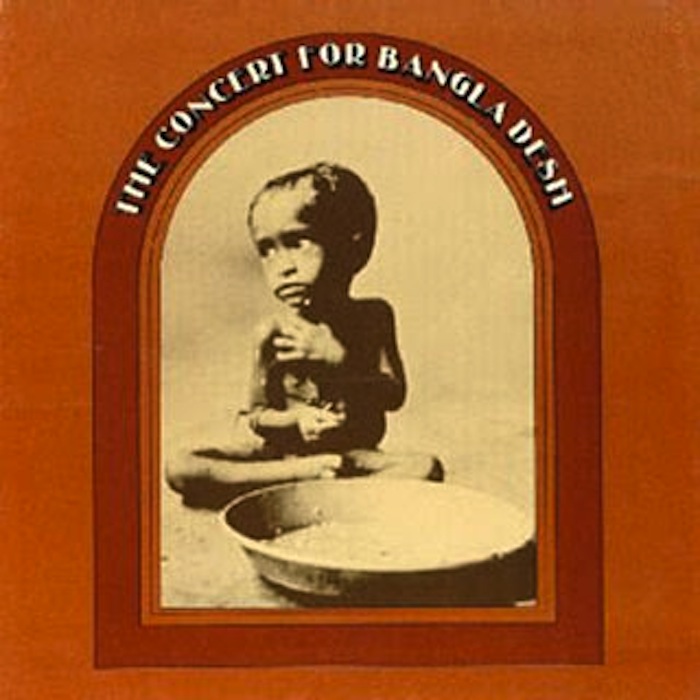 Not to be forgotten here are both George Harrison live albums that contain “Something,” the first being “The Concert For Bangladesh,” which was released on December 20th, 1971 and reached #2 on the Billboard album chart. So respected was this triple-album that it won the Grammy for “Album Of The Year” in 1973. It first appeared on compact disc on July 30th, 1991 and then as a remastered release on October 24th, 2005. Not to be forgotten here are both George Harrison live albums that contain “Something,” the first being “The Concert For Bangladesh,” which was released on December 20th, 1971 and reached #2 on the Billboard album chart. So respected was this triple-album that it won the Grammy for “Album Of The Year” in 1973. It first appeared on compact disc on July 30th, 1991 and then as a remastered release on October 24th, 2005.
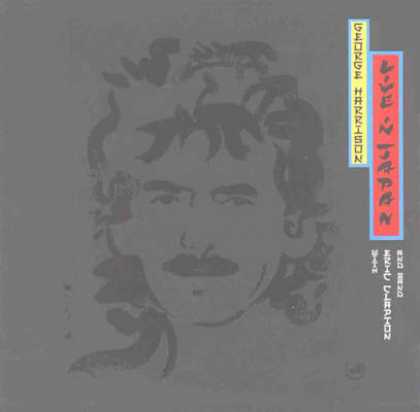 The second live album to feature George performing “Something” on stage was “Live In Japan,” which was released on July 13th, 1992. While peaking at a disappointing #126 on the Billboard album chart, reviews were very favorable. For instance, AllMusic editor Stephen Thomas Erlewine says that it “easily surpasses Paul McCartney's double-disc 'Tripping The Live Fantastic' or 'Paul Is Live.' Not bad for a guy who doesn't like to give concerts." The second live album to feature George performing “Something” on stage was “Live In Japan,” which was released on July 13th, 1992. While peaking at a disappointing #126 on the Billboard album chart, reviews were very favorable. For instance, AllMusic editor Stephen Thomas Erlewine says that it “easily surpasses Paul McCartney's double-disc 'Tripping The Live Fantastic' or 'Paul Is Live.' Not bad for a guy who doesn't like to give concerts."
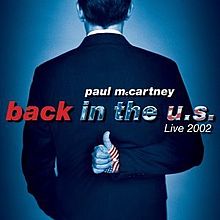 Paul took to doing tribute performances of "Something" during his shows, three live renditions being released in the US. The first was Paul's "Back In The US" album, which was recorded somewhere between April 1st and May 18th, 2002 and released on November 11th, 2002. The second time was on "Concert For George," which was performed on November 29th, 2002 and released on November 17th, 2003. The third was Paul's "Good Evening New York City," this performance being recorded sometime between July 17th and 21st, 2009 and released on November 17th, 2009. Paul took to doing tribute performances of "Something" during his shows, three live renditions being released in the US. The first was Paul's "Back In The US" album, which was recorded somewhere between April 1st and May 18th, 2002 and released on November 11th, 2002. The second time was on "Concert For George," which was performed on November 29th, 2002 and released on November 17th, 2003. The third was Paul's "Good Evening New York City," this performance being recorded sometime between July 17th and 21st, 2009 and released on November 17th, 2009.
Live Performances
By October of 1969, The Beatles were well past the live concert stage of their career, so they never performed "Something" live as a group.
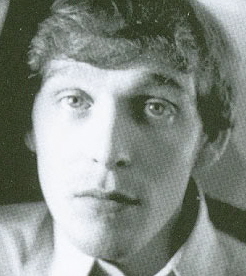 However, as a means of promoting the new single, a film clip was made by Apple Films, produced by longtime roadie and associate Neil Aspinall, to be shown on TV. The band couldn't be bothered to appear together, pretty much going their separate ways after “Abbey Road” was complete, but they all did agree to be filmed separately at their individual residences so that Neil Aspinall could create a composite film clip for television. The footage is thought to have been filmed sometime in October of 1969. However, as a means of promoting the new single, a film clip was made by Apple Films, produced by longtime roadie and associate Neil Aspinall, to be shown on TV. The band couldn't be bothered to appear together, pretty much going their separate ways after “Abbey Road” was complete, but they all did agree to be filmed separately at their individual residences so that Neil Aspinall could create a composite film clip for television. The footage is thought to have been filmed sometime in October of 1969.
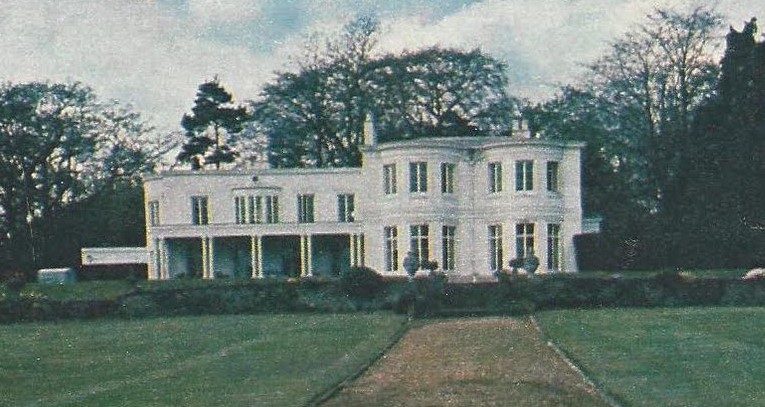 Appropriate for the lyrical content of the song, each of them were filmed in outdoor settings with his wife. John and Yoko were filmed at 'Tittenhurst,' their new residence near Ascot, George and Pattie were filmed at 'Kinfauns' in Esher, and Ringo and wife Maureen were at their 'Brookfield' home in Elstead. As for Paul and Linda, after the album was done they quickly retreated to his Scottish farm on the Mull of Kintyre, staying there almost until Christmas that year. In order to cooperate with the proceedings, Paul agreed to send film footage of him and Linda, so he tied a camera to the back of a tractor, stepped back to show himself and Linda in the picture, and then sent the film to Neil for inclusion in the film clip. Appropriate for the lyrical content of the song, each of them were filmed in outdoor settings with his wife. John and Yoko were filmed at 'Tittenhurst,' their new residence near Ascot, George and Pattie were filmed at 'Kinfauns' in Esher, and Ringo and wife Maureen were at their 'Brookfield' home in Elstead. As for Paul and Linda, after the album was done they quickly retreated to his Scottish farm on the Mull of Kintyre, staying there almost until Christmas that year. In order to cooperate with the proceedings, Paul agreed to send film footage of him and Linda, so he tied a camera to the back of a tractor, stepped back to show himself and Linda in the picture, and then sent the film to Neil for inclusion in the film clip.
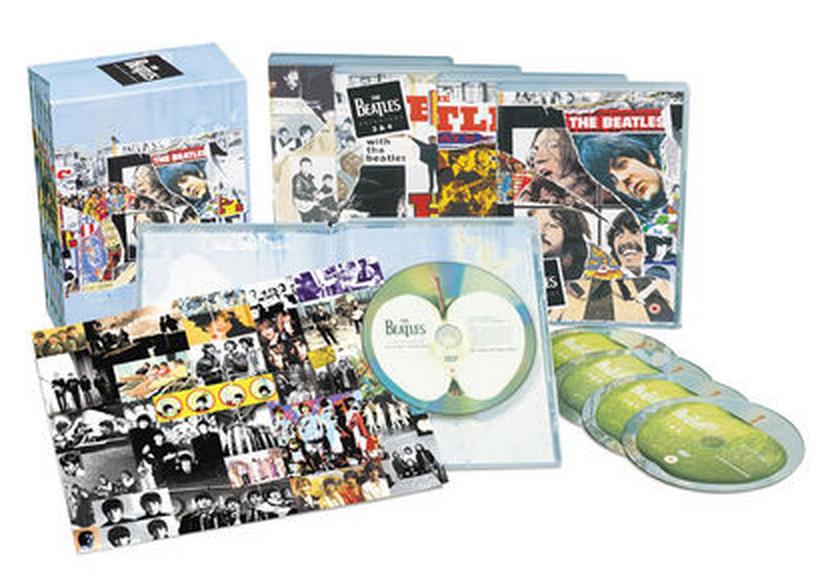 This charming promo film was shown only once in the UK on the BBC1 show “Top Of The Pops” on November 13th, 1969 in black and white. This promo film was also seen in the US on the show “Music Scene” in the later months of 1969. It was eventually included in the “Anthology” TV series and video release of 1995, not to mention being released in a remarkably restored condition on the “Beatles 1+” DVD / Blu-Ray box set on November 6th, 2015. This charming promo film was shown only once in the UK on the BBC1 show “Top Of The Pops” on November 13th, 1969 in black and white. This promo film was also seen in the US on the show “Music Scene” in the later months of 1969. It was eventually included in the “Anthology” TV series and video release of 1995, not to mention being released in a remarkably restored condition on the “Beatles 1+” DVD / Blu-Ray box set on November 6th, 2015.
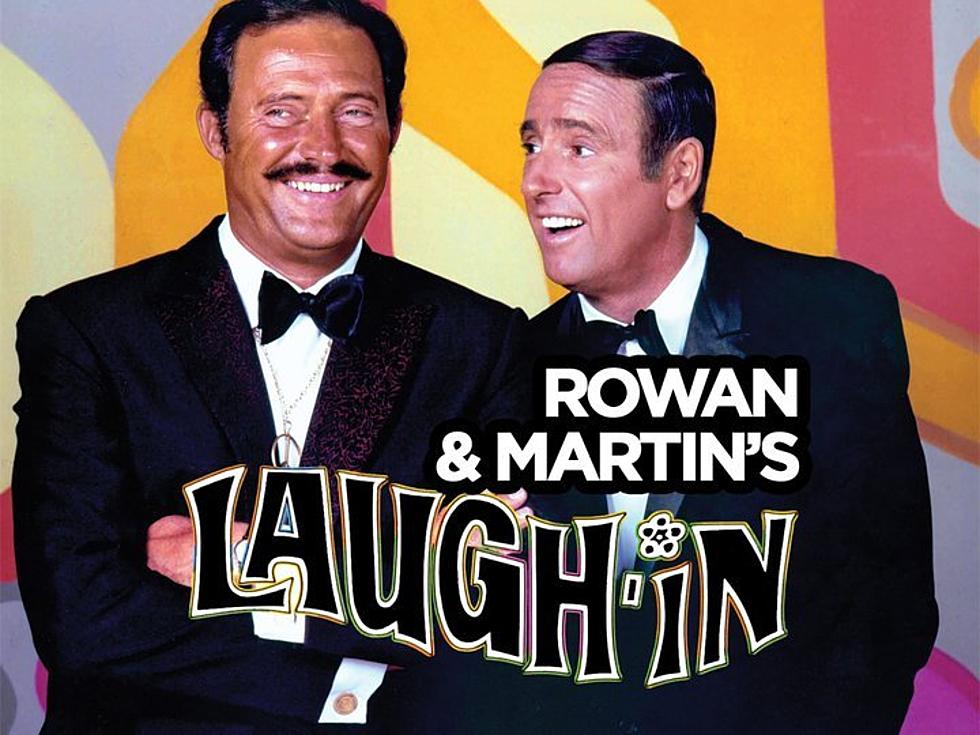 A quite interesting mini-performance of the hit song "Something" by one of The Beatles was recorded in Burbank, California on January 27th, 1970 and aired on US television on February 23rd, 1970. Ringo made an appearance on the popular NBC program "Rowan & Martin's Laugh-In" and was utilized in various quick interview segments, most of these in promotion of his newly released movie "The Magic Christian." In one of these skits, Ringo and actress Teresa Graves sing the opening lyric to The Beatles' most recent hit song at the time, namely, "Something in the way she moves." A quite interesting mini-performance of the hit song "Something" by one of The Beatles was recorded in Burbank, California on January 27th, 1970 and aired on US television on February 23rd, 1970. Ringo made an appearance on the popular NBC program "Rowan & Martin's Laugh-In" and was utilized in various quick interview segments, most of these in promotion of his newly released movie "The Magic Christian." In one of these skits, Ringo and actress Teresa Graves sing the opening lyric to The Beatles' most recent hit song at the time, namely, "Something in the way she moves."
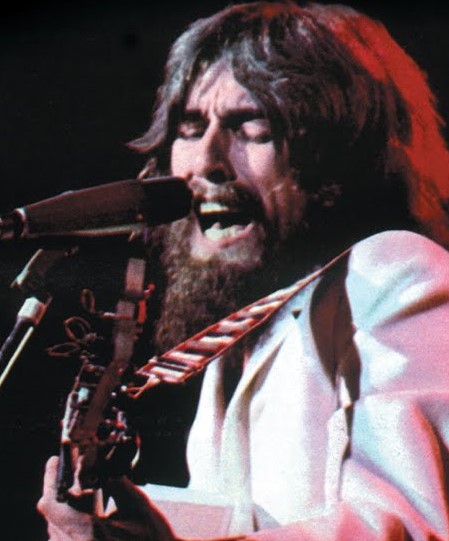 Although George didn't have an extensive stage career after The Beatles, he was proud enough of “Something” to include it in various appearances he did make. The legendary “Concert For Bangladesh,” held at Madison Square Garden in New York City on August 1st, 1971, included "Something" for both shows, this being the second song George performed for the afternoon show and the next-to-last song for the evening performance. The song was also in the set list for George's 1974 North American Tour, which ran from November 2nd (Vancouver, British Colombia) to December 20th (Madison Square Garden, New York City). Curiously, during these 1974 performances he would habitually change the introductory lyrics to "When something is in the way, remove it / and find yourselves another lover," undoubtedly refering to his recent estrangement with wife Pattie Boyd, while also changing the lyrics in the bridge from "I don't know" to "I hope so." Although George didn't have an extensive stage career after The Beatles, he was proud enough of “Something” to include it in various appearances he did make. The legendary “Concert For Bangladesh,” held at Madison Square Garden in New York City on August 1st, 1971, included "Something" for both shows, this being the second song George performed for the afternoon show and the next-to-last song for the evening performance. The song was also in the set list for George's 1974 North American Tour, which ran from November 2nd (Vancouver, British Colombia) to December 20th (Madison Square Garden, New York City). Curiously, during these 1974 performances he would habitually change the introductory lyrics to "When something is in the way, remove it / and find yourselves another lover," undoubtedly refering to his recent estrangement with wife Pattie Boyd, while also changing the lyrics in the bridge from "I don't know" to "I hope so."
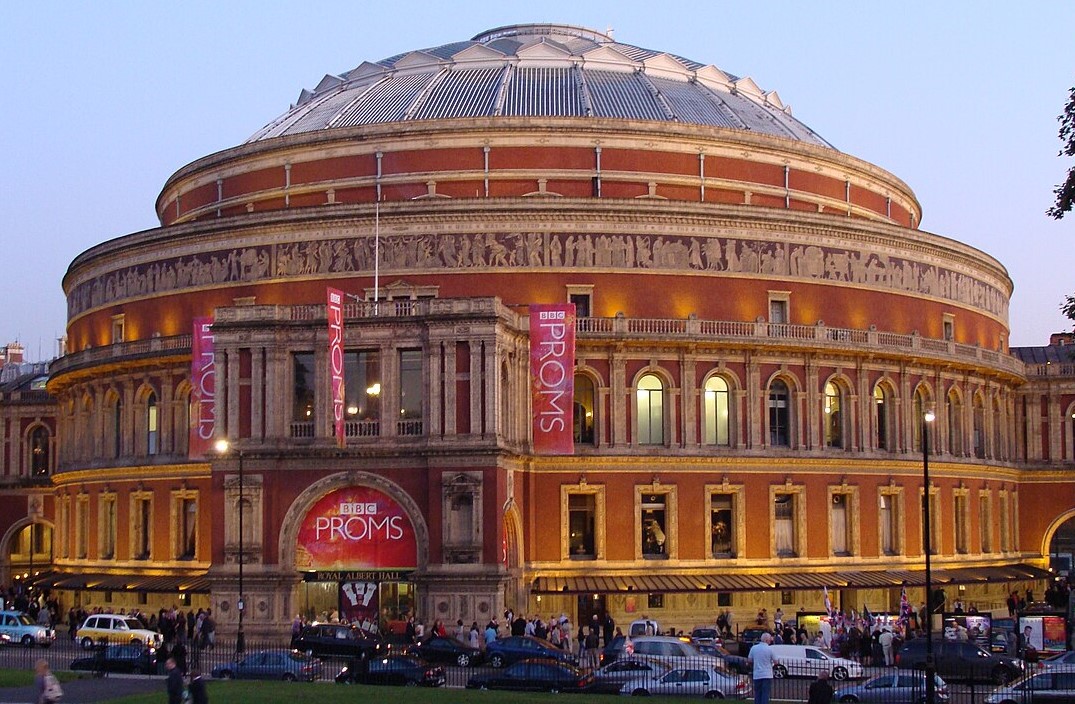 George's brief tour of Japan in December of 1991 also included the song, this tour stretching from December 1st (Yokohama) to the 17th (Tokyo). A different lyrical change was heard during some of these Japanese performances, this being "You stick around, Jack, it might show" in imitation of Frank Sinatra's rendition of the song. His final full concert performance was on April 6th, 1992 at London's Royal Albert Hall with Ringo on drums. “Something” was included in this set list which consisted primarily of the same songs as his Japanese tour from four months prior. George's brief tour of Japan in December of 1991 also included the song, this tour stretching from December 1st (Yokohama) to the 17th (Tokyo). A different lyrical change was heard during some of these Japanese performances, this being "You stick around, Jack, it might show" in imitation of Frank Sinatra's rendition of the song. His final full concert performance was on April 6th, 1992 at London's Royal Albert Hall with Ringo on drums. “Something” was included in this set list which consisted primarily of the same songs as his Japanese tour from four months prior.
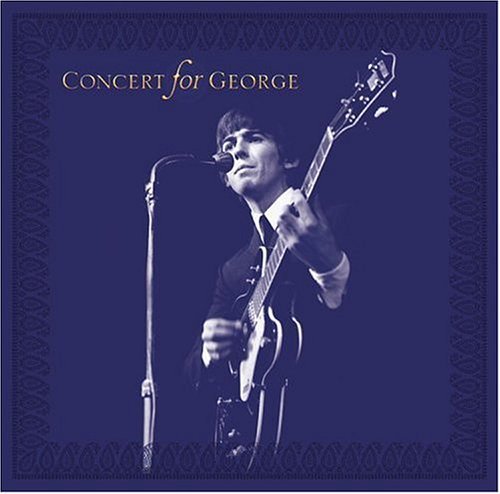 After George's death, Paul thought to put together a performance of "Something," which he viewed as George Harrison's best composition, as a tribute to his former bandmate during various tours. First off, Paul McCartney's rendition of "Something," which partially included him playing a good portion of the song on Harrison's later instrument of choice, the ukulele, was included on his "Driving World" tour, which stretched from April 1st (Oakland, California) to November 18th, 2002 (Osoka, Japan). Then came Paul's performance at the "Concert For George," which occured on November 29th, 2002 at London's Royal Albert Hall. He then included the song in his "Back In The World" tour, spanning from March 25th (Paris, France) through to June 1st, 2003 (Liverpool, England). The song was also included in the "Summer Live '09" tour, stretching from July 17th (Citi Field, New York City, New York) to August 19th, 2009 (Arlington, Texas). Then came the "Good Evening Europe" tour, spanning from December 2nd (Hamburg, Germany) through to December 22nd, 2009 (London, England). Next was the "Up And Coming" tour, stretching from March 28th, 2010 (Glendale, California) to June 10th, 2011 (Las Vegas, Nevada). After George's death, Paul thought to put together a performance of "Something," which he viewed as George Harrison's best composition, as a tribute to his former bandmate during various tours. First off, Paul McCartney's rendition of "Something," which partially included him playing a good portion of the song on Harrison's later instrument of choice, the ukulele, was included on his "Driving World" tour, which stretched from April 1st (Oakland, California) to November 18th, 2002 (Osoka, Japan). Then came Paul's performance at the "Concert For George," which occured on November 29th, 2002 at London's Royal Albert Hall. He then included the song in his "Back In The World" tour, spanning from March 25th (Paris, France) through to June 1st, 2003 (Liverpool, England). The song was also included in the "Summer Live '09" tour, stretching from July 17th (Citi Field, New York City, New York) to August 19th, 2009 (Arlington, Texas). Then came the "Good Evening Europe" tour, spanning from December 2nd (Hamburg, Germany) through to December 22nd, 2009 (London, England). Next was the "Up And Coming" tour, stretching from March 28th, 2010 (Glendale, California) to June 10th, 2011 (Las Vegas, Nevada).
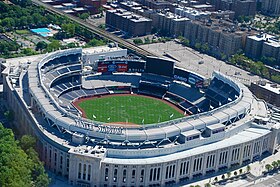 Paul's "On The Run" tour was next, which spanned from July 15th, 2011 (at Yankee Stadium in New York City) to November 29th, 2012 (Edmonton, Canada). He also included the song during his "Out There" tour, which ran from May 4th, 2013 (Belo Horizonte, Brazil) through October 22nd, 2015 (Buffalo, New York). His "One To One" tour also included the song, this tour stretching from April 13th, 2016 (Fresno, California) through December 16th, 2017 (Aukland, New Zealand). Paul's "Freshen Up" tour was the next to include "Something," which ran from September 17th, 2018 (Quebeck City, Canada) to July 13th, 2019 (Los Angeles, California), followed by his "Got Back" tour, which ran from April 28th, 2022 (Spokane, Washington) through to December 19th, 2024 (London, England). Paul's "On The Run" tour was next, which spanned from July 15th, 2011 (at Yankee Stadium in New York City) to November 29th, 2012 (Edmonton, Canada). He also included the song during his "Out There" tour, which ran from May 4th, 2013 (Belo Horizonte, Brazil) through October 22nd, 2015 (Buffalo, New York). His "One To One" tour also included the song, this tour stretching from April 13th, 2016 (Fresno, California) through December 16th, 2017 (Aukland, New Zealand). Paul's "Freshen Up" tour was the next to include "Something," which ran from September 17th, 2018 (Quebeck City, Canada) to July 13th, 2019 (Los Angeles, California), followed by his "Got Back" tour, which ran from April 28th, 2022 (Spokane, Washington) through to December 19th, 2024 (London, England).
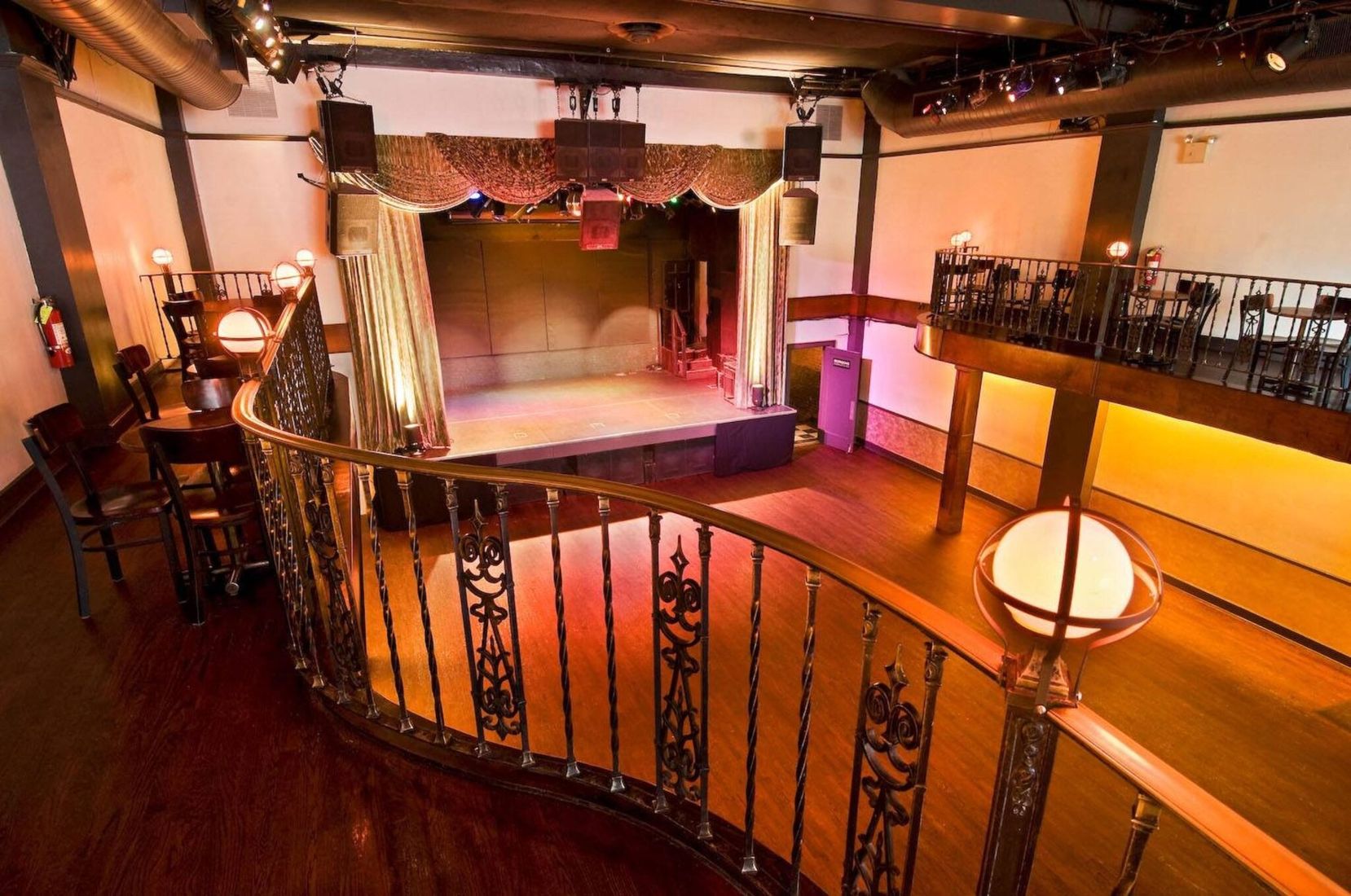 Interestingly, Paul and his group played a surprise three night residency at the Bowery Ballroom in New York City on February 11th, 12th and 14th, 2025, this final night being Valentine's Day. They performed George's "Something" at every one of these shows at this quaint 575-capacity venue that was located in Manhattan. Interestingly, Paul and his group played a surprise three night residency at the Bowery Ballroom in New York City on February 11th, 12th and 14th, 2025, this final night being Valentine's Day. They performed George's "Something" at every one of these shows at this quaint 575-capacity venue that was located in Manhattan.
Conclusion
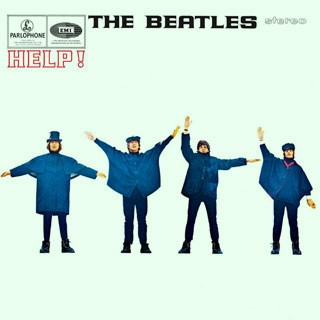 During a good portion of The Beatles career, it would be easy to spot the George Harrison composition or two on a Beatles album. Although they were respectable components to the LP, they may nonetheless have been viewed by some as just token offerings allowed as a favor to the fledgling songwriter. During a good portion of The Beatles career, it would be easy to spot the George Harrison composition or two on a Beatles album. Although they were respectable components to the LP, they may nonetheless have been viewed by some as just token offerings allowed as a favor to the fledgling songwriter.
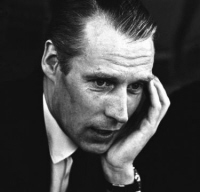 George Martin, as quoted in the 2000 book “Anthology,” admits that this is accurate. "I think the trouble with George was that he was never treated on the same level as having the same quality of songwriting, by anyone – by John, by Paul or by me. I am as guilty in that respect. I was the guy who used to exclaim: 'If he's got a song, we will let him have it on the album' – very condescendingly. He must have felt really bad about that. Gradually he kept persevering, and his songs did get better until eventually they got extremely good. 'Something' is a wonderful song – but we didn't give him credit for it, and we never really thought, 'He is going to be a great songwriter.'" George Harrison's bitterness about their attitude toward his songs, unfortunately, got the best of him, as he said in a conversation that was recorded by Anthony Fawcett at an Apple meeting in Autumn of 1969, “Maybe now I just don't care whether you're going to like them or not. I just do 'em.” George Martin, as quoted in the 2000 book “Anthology,” admits that this is accurate. "I think the trouble with George was that he was never treated on the same level as having the same quality of songwriting, by anyone – by John, by Paul or by me. I am as guilty in that respect. I was the guy who used to exclaim: 'If he's got a song, we will let him have it on the album' – very condescendingly. He must have felt really bad about that. Gradually he kept persevering, and his songs did get better until eventually they got extremely good. 'Something' is a wonderful song – but we didn't give him credit for it, and we never really thought, 'He is going to be a great songwriter.'" George Harrison's bitterness about their attitude toward his songs, unfortunately, got the best of him, as he said in a conversation that was recorded by Anthony Fawcett at an Apple meeting in Autumn of 1969, “Maybe now I just don't care whether you're going to like them or not. I just do 'em.”
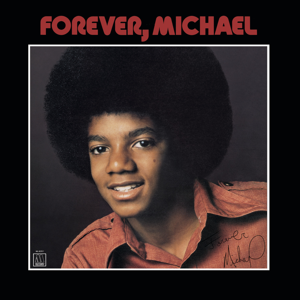 On later Beatles' albums, the increased songwriting quality of George's songs was quite unexpected and, therefore, surprised a lot of fans that he indeed was the composer of said songs. As McCartney related in the "Anthology" book: "I think Frank Sinatra used to introduce (his performance of) 'Something' as his favorite Lennon / McCartney song. Thanks Frank!" Also quoted in "Anthology," Harrison recalls: “I met Michael Jackson somewhere at the BBC. The man interviewing us made a comment about 'Something,' and Michael said: 'Oh, you wrote that? I thought it was a Lennon / McCartney.'” On later Beatles' albums, the increased songwriting quality of George's songs was quite unexpected and, therefore, surprised a lot of fans that he indeed was the composer of said songs. As McCartney related in the "Anthology" book: "I think Frank Sinatra used to introduce (his performance of) 'Something' as his favorite Lennon / McCartney song. Thanks Frank!" Also quoted in "Anthology," Harrison recalls: “I met Michael Jackson somewhere at the BBC. The man interviewing us made a comment about 'Something,' and Michael said: 'Oh, you wrote that? I thought it was a Lennon / McCartney.'”
 Like them, we all may have been pleasantly surprised after looking closer at the record label to see “George Harrison” under the title of this song. Once we did, smiles and raised eyebrows were most likely our reaction. Overwhelming praise for the song soon became universal, George finally getting his due as a composer. Testimony to this is the fact that it has become the most covered Beatles song in their entire catalog, second only to “Yesterday.” Like them, we all may have been pleasantly surprised after looking closer at the record label to see “George Harrison” under the title of this song. Once we did, smiles and raised eyebrows were most likely our reaction. Overwhelming praise for the song soon became universal, George finally getting his due as a composer. Testimony to this is the fact that it has become the most covered Beatles song in their entire catalog, second only to “Yesterday.”
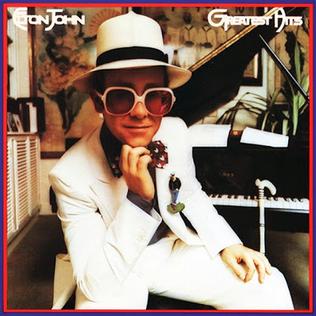 “It was beautiful,” Ringo stated. “George was blossoming as a songwriter. With 'Something' and 'While My Guitar Gently Weeps' – are you kidding me? Two of the finest love songs ever written, and they're both really on a par with what John and Paul or anyone else of that time were writing.” Elton John expressed his admiration to Rolling Stone magazine by stating: “'Something' is probably one of the best love songs ever, ever, ever written...It's better than 'Yesterday,' much better...It's like the song I've been chasing for the last thirty-five years.” “It was beautiful,” Ringo stated. “George was blossoming as a songwriter. With 'Something' and 'While My Guitar Gently Weeps' – are you kidding me? Two of the finest love songs ever written, and they're both really on a par with what John and Paul or anyone else of that time were writing.” Elton John expressed his admiration to Rolling Stone magazine by stating: “'Something' is probably one of the best love songs ever, ever, ever written...It's better than 'Yesterday,' much better...It's like the song I've been chasing for the last thirty-five years.”
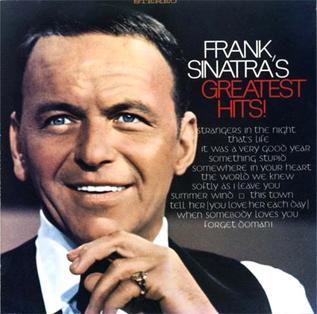 Probably the best example of praise for “Something” was what Frank Sinatra would state when introducing this song for his live performances: “It's one of the best love songs, I believe, to be written in 50 or 100 years – and it never says 'I Love You' in the song. But it really is one of the finest!” Probably the best example of praise for “Something” was what Frank Sinatra would state when introducing this song for his live performances: “It's one of the best love songs, I believe, to be written in 50 or 100 years – and it never says 'I Love You' in the song. But it really is one of the finest!”
Song Summary
“Something”
Written by: George Harrison
- Song Written: September, 1968 to February, 25 1969
- Song Recorded: May 2, 5, July 11, 16, August 15, 1969
- First US Release Date: October 1, 1969
- First US Album Release: Apple #SO-383 “Abbey Road”
- British Album Release: Apple #PCS 7088 “Abbey Road”
- US Single Release: Apple #2654
- Highest Chart Position: #1
- Length: 2:59
- Key: C major
- Producers: Chris Thomas, George Martin, George Harrison
- Engineers: Jeff Jarratt, Glyn Johns, Phil McDonald, Geoff Emerick, Nick Webb, Steve Vaughan, John Kurlander, Alan Parsons
Instrumentation (most likely):
- George Harrison - Lead Vocals, Lead and Rhythm Guitar (1957 Gibson Les Paul Standard)
- Paul McCartney - Bass (1964 Rickenbacker 4001 S ), Piano (1905 Steinway Vertegrand), backing vocals
- Ringo Starr - Drums (1968 Ludwig Hollywood Maple), percussion
- Billy Preston - Organ (Hammond RT-3)
- unknown - violin
- unknown - violin
- unknown - violin
- unknown - violin
- unknown - violin
- unknown - violin
- unknown - violin
- unknown - violin
- unknown - violin
- unknown - violin
- unknown - violin
- unknown - violin
- unknown - viola
- unknown - viola
- unknown - viola
- unknown - viola
- unknown - cello
- unknown - cello
- unknown - cello
- unknown - cello
- unknown - string bass
Written and compiled by Dave Rybaczewski
|
IF YOU WOULD LIKE TO MAKE A DONATION TO KEEP THIS WEBSITE UP AND RUNNING, PLEASE CLICK BELOW!
Sign Up Below for our MONTHLY BEATLES TRIVIA QUIZ!
|